ARTISTS OF THE 19 13 ARMORY SHOW


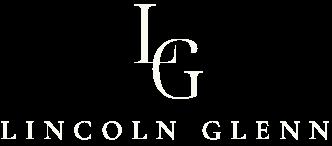






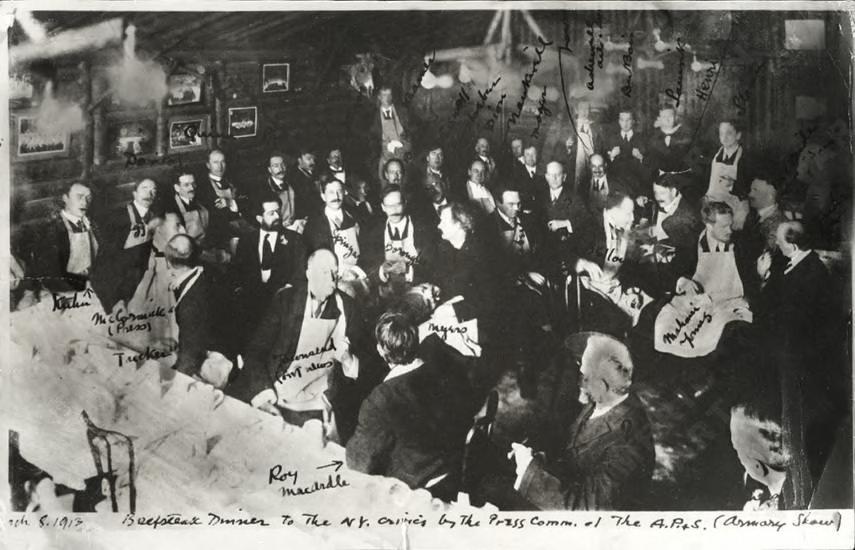
Armory Show artists and members of the press at the beefsteak dinner given by the Association of American Painters and Sculptors, March 8, 1913
All rights reserved. This catalog may not be reproduced in whole or in any part, in any form or by any means, electronic or mechanical, without the written permission of Graham Shay 1857 and Lincoln Glenn.
Design by Clanci Jo Conover
Front cover illustration (left to right): Manierre Dawson, Upper Street, 1912; Joseph Stella, Palms, c. 1940; William Zorach, The Dream, 1949; Childe Hassam, The Pretty Pool, Bass Rocks, 1919; Jonas Lie, Frosty Morning, 1923
Back cover illustration: Marsden Hartley, Landscape No. 24, c. 1909-10
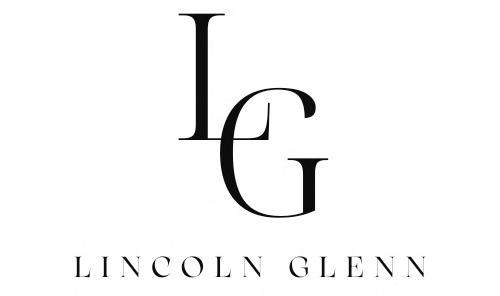
Lincoln Glenn and Graham Shay 1857 Galleries are honored to present Artists of the 1913 Armory Show in honor of the 110th Anniversary of the epoch-making exhibition. This exhibition stands as our inaugural display of collaboration at our 17 East 67th Street gallery.
Lincoln Glenn and Graham Shay 1857 galleries share an unwavering passion for the interplay between the modern and the traditional. Today, we view many of the artists who exhibited at the Armory Show as traditional, but in 1913 these artists were contemporary and offered a profound challenge to the status quo. We draw inspiration from the audacity of those artists and creators who forged new paths.
The threads that connect us to the artists of the 1913 Armory Show and the subsequent generations are not only historical, but deeply personal. By selling and handling works by many of the artists showcased in 1913, we have cultivated an intimate connection with their visions. We feel their ingenuity coursing through the brushstrokes and sculptural forms that grace these walls and pedestals.
This exhibition is more than a retrospective; it is an ode to the relentless spirit of artistic exploration. We proudly present this homage to the 1913 Armory Show in the hope that it can serve as a testament to the enduring power of art to challenge and inspire.
Warmly,
Doug Gold, Eli Sterngass, and Cameron Shay
Lincoln Glenn and Graham Shay 1857 Galleries
The Ongoing Story of the Armory Show (1913)
The 1913 Armory Show brought irreversible knowledge of modernist art to the American public.¹ While standing in one of the Show’s galleries, the key organizer Arthur Bowen Davies declared: “New York will never be the same again.”² Although Alfred Stieglitz had displayed work by Pablo Picasso, Henri Matisse, Auguste Rodin, and American modernists at his gallery 291 before 1913, it was only in the wake of the Armory Show that large numbers of American artists incorporated the new artistic “isms” into their work.³
Officially called the International Exhibition of Modern Art, the Show was organized by the American Association of Painters & Sculptors, a group of twenty male artists.⁴ The Show’s works were selected by Davies, Walt Kuhn, and Walter Pach, who began with the idea of creating a showcase for young progressive American artists who could not exhibit their work readily elsewhere. However, after a trip to Europe in 1912, in which Davies and Kuhn experienced contemporary European art and met with Pach (an expatriate in Paris), they shifted the exhibition’s focus to one featuring the new art of Europe. The exhibition opened in New York City’s 69th Regiment Armory (Lexington Avenue between East Twenty-fifth and Twentysixth streets) on February 17, 1913. On view in eighteen octagonal spaces on burlapcovered walls were approximately 1300 works. Almost 300,000 visitors saw the show in one of its three venues—it traveled in smaller iterations to Chicago and Boston. Countless others read the newspaper reviews, either praising the Show’s innovations as groundbreaking or condemning its art as “pathological” and “hideous.”⁵
Most discussions of the exhibition focused on the most controversial works. Marcel Duchamp’s cubist/futurist Nude Descending the Staircase, 1912 (Philadelphia Museum of Art) was the most reviled work in the Show by traditionalists; it was famously described as “an explosion in a shingle factory.” Other targets included Constantin Brancusi’s reductive-symbolist Mlle Pogany I, 1912 (Philadelphia Museum of Art)— denounced as a “deformed infant”—and Henri Matisse’s Fauvist Blue Nude, 1907 (Baltimore Museum of Art)—called “vulgar, distorted, and toadlike.” Yet, the Show’s organizers did not intend to shock U.S. audiences but instead to educate them about the new developments in the modern art of Europe and to establish the place of American artists within its new vision.
The reactions to the Armory Show also mirrored the nation’s zeitgeist as the tensions leading to World War I mounted, and fault lines and anxieties were exposed as the U.S. became increasingly multicultural. Those repelled felt the Show represented a foreign influx that threatened the values of an older America, while those who supported it believed it had revealed new eye-opening ways of experiencing the world.
The Armory Show’s organizers hoped to establish a historical trajectory for modernist directions in American art.6 They did so by featuring works by deceased Americans, including James McNeill Whistler, Theodore Robinson, and John Henry Twachtman. More progressive American examples were by painters including John Marin, Marsden Hartley, Arthur B. Carles, and Oscar Bluemner. The sculptors included Robert Ingersoll Aitken, Charles Cary Rumsey, Bessie Potter Vonnoh, Chester Beach, George Gray Barnard, and Abastenia St. Leger Eberle, who mostly worked in established genres, such as Beaux-Arts classicism, symbolism, and realism.
Two appendices in the catalogue accompanying the 2013 New-York Historical Society’s Armory Show centennial exhibition provide checklists of the Show, and discussions, especially by Kimberly Orcutt (who edited it along with Marilyn Satin Kushner), describe its installation.7 Indeed, the work that garnered the most attention was in the “Cubist room” (Gallery I) at the core of the space. Fauvist art was the second to draw notice, mostly to the work of Matisse, represented by thirteen paintings (including not only Blue Nude but also The Red Studio, 1911, Museum of Modern Art), three drawings, and one sculpture. Works by European Impressionists and Post-Impressionists abounded (including sixteen works by Paul Cézanne), signifying the foundation from which later innovations, including Cubism, emerged. American art was at the periphery of the galleries, indicating that Americans were just at the beginning of the modernist journey initiated at its nucleus in Paris. Yet the art in the Show was extremely diverse, not just in its modernist aspects but also, in general, in its styles and subjects (as well as to some extent in its media, including drawings, lithographs, and an embroidery), and some of the work shown that has received less consideration is worth highlighting. This includes the art by approximately forty-five female participants out of the three hundred artists featured.8
An article contributed by Arthur B. Davies to the March 1913 issue of Arts & Decoration, which was devoted to the Armory Show, included a chronological chart “Showing the Growth of Modern Art.”9 The chart was meant to reveal that the modernist work on view (linked to art in the modes of Classicism, Realism, and Romanticism) was not really a break from the art of the past but instead a continuation of its most innovative directions. For Davies, a symbolist painter of vaguely mythological subject matter, the Armory Show was not a nihilist exercise but a logical continuation of “Western” art since the Middle Ages. In that sense, it helped enshrine a linear art-historical canon in which modernism and abstraction were the culmination of an ongoing tradition; this was further touted by Clement Greenberg in the 1960s.10
The Armory Show helped initiate a dramatic awakening in the United States to powerful new modes of expression with which to face up to the multiplicity,
insecurities, and dissension of the twentieth century. It remains one of the most decisive events in American art history, and its many facets are suggested in the works on view in this exhibition.
Lisa N. Peters, PhD
Endnotes
1. The most significant and comprehensive account of the show is Marilyn Satin Kushner and Kimberly Orcutt, editors, The Armory Show at 100: Modernism and Revolution (New York: New-York Historical Society, 2013), accompanying an exhibition at the New-York Historical Society in 2013, and consisting of thirty scholarly essays. See also Milton K. Brown, The Story of the Armory Show (New York: Joseph H. Hirshhorn Foundation, 1963.
2. Arthur Farwell, “Letter to the Editor,” Sun (New York), August 30, 1948. Cited in Kimberly Orcutt, “Arthur B. Davies—Hero or Villain?” in Kushner and Orcutt, p. 29.
3. Opened in 1908 and located at 291 Fifth Avenue, the gallery exhibited the work before the Armory Show, of Arthur B. Carles (solo show, 1912), Arthur Dove (solo show, 1912), Marsden Hartley (solo show, 1909), John Marin (solo shows, 1909 and 1913), Abraham Walkowitz (solo show, 1912), Max Weber (solo show, 1911), and Marius de Zayas (solo show, 1909).
4 J. Alden Weir was elected president of the American Association of Painters & Sculptors (AAPS) in 1912. However, he resigned almost immediately on learning that the Association had taken a stand against the National Academy of Design, where Weir was a frequent exhibitor and later president. Davies succeeded him in the presidency; Gutzon Borglum was elected vice president; Kuhn, secretary; and Elmer MacRae treasurer. Borglum quit when the works of conservative sculptors including Daniel Chester French and Frederick MacMonnies were rejected from the Show. After the Show, the AAPS was plagued by dissent and held its final meeting in February 1916 shortly before it was dissolved. See Kimberly Orcutt, “Arthur B. Davies—Hero or Villain?” pp. 29–42; Gail Stavitsky, “Walt Kuhn: Armory Showman,” pp. 43–54; Laurette E. McCarthy, “Walter Pach: Agent of Modernism, pp. 55–68; and Susan G. Larkin, “‘So many thrills, so much excitement”: Elmer MacRae’s Role in the Armory Show, pp. 69–79.
5. For example, see Kenyon Cox, “Cubists and Futurists are Making Insanity Pay,” New York Times, March 16, 1913, p. SM1. See Orcutt, “‘Public Verdict’: Debating Modernism at the Armory Show,” in Kushner and Orcutt, pp. 327–39; Judith A Barter, “‘The Great Confusion’: The Armory Show in Chicago,” in Kushner and Orcutt, pp. 363–73; and Carol Troyen, “‘Unwept, unhonored, and unsung’: The Armory Show in Boston,” in Kushner and Orcutt, pp. 379–91.
6. See Virginia M. Mecklenburg, “Slouching toward Modernism: American Art at the Armory Show,” in Kushner and Orcutt, p. 244.
7. Orcutt, “Arthur B. Davies—Hero or Villain?” pp. 35–36.
8. On the women in the exhibition and related women’s organizations of the era, see Charles Musser, “1913: A Feminist Moment in the Arts,” in Kushner and Orcutt, pp. 169–79.
9. Orcutt, “Arthur B. Davies—Hero or Villain?” pp. 35–36.
10. See Clement Greenberg, “Modernist Painting,” Art and Literature 4 (Spring 1965), p. 193.
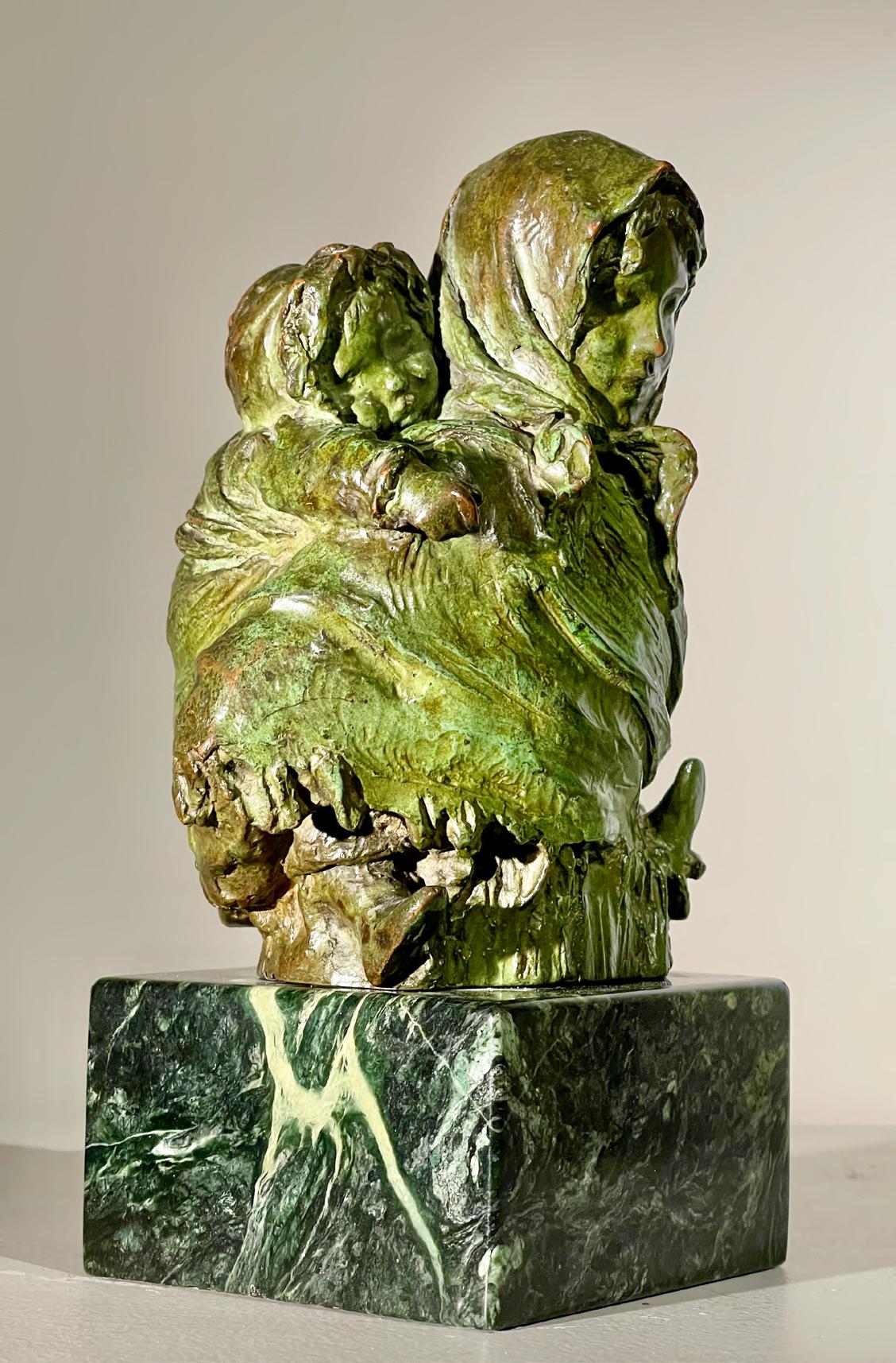
Bessie Potter Vonnoh (American, 1872 - 1955)
Italian Mother, 1907
Bronze, green patina
Signed and numbered: BPV / No III
5 3/4 H. x 5 1/4 W. x 3 5/8 D. inches
Mounted on period marble plinth, overall height (7 ¾) inches
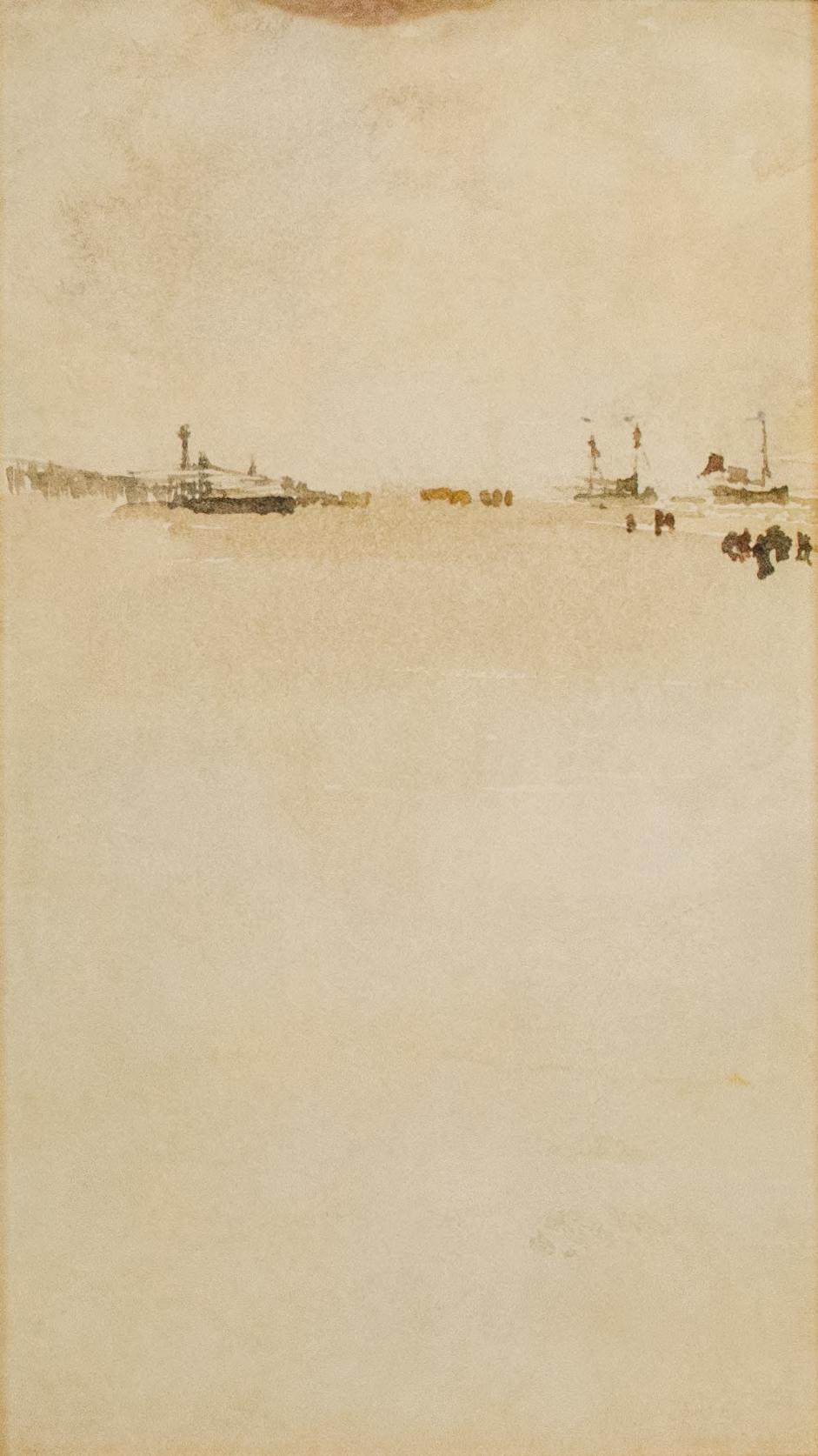
James Abbott McNeill Whistler (American, 1834 - 1903)
Beach Scene at Dieppe, 1885-86
Watercolor on paper, mounted on board
8 1/2 x 5 inches
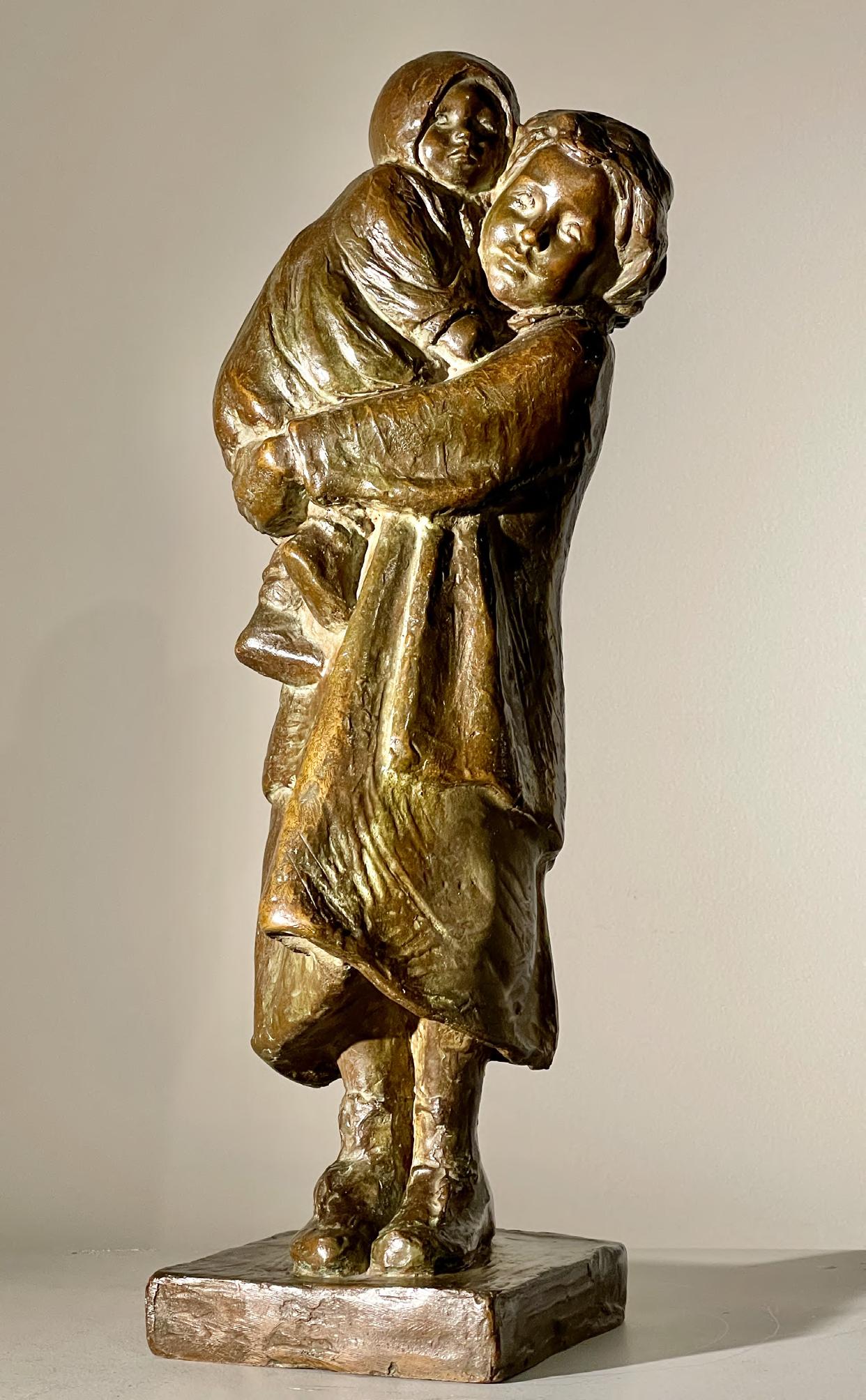
Abastenia St. Leger Eberle (American, 1878 - 1942)
Little Mother, 1907
Bronze, 12 7/8 H. x 4 1/4 W. x 4 3/8 D. inches
Signed “ASt.L. Eberle. 1911”
Stamped: S. KLABER & CO. / FOUNDERS, N.Y.
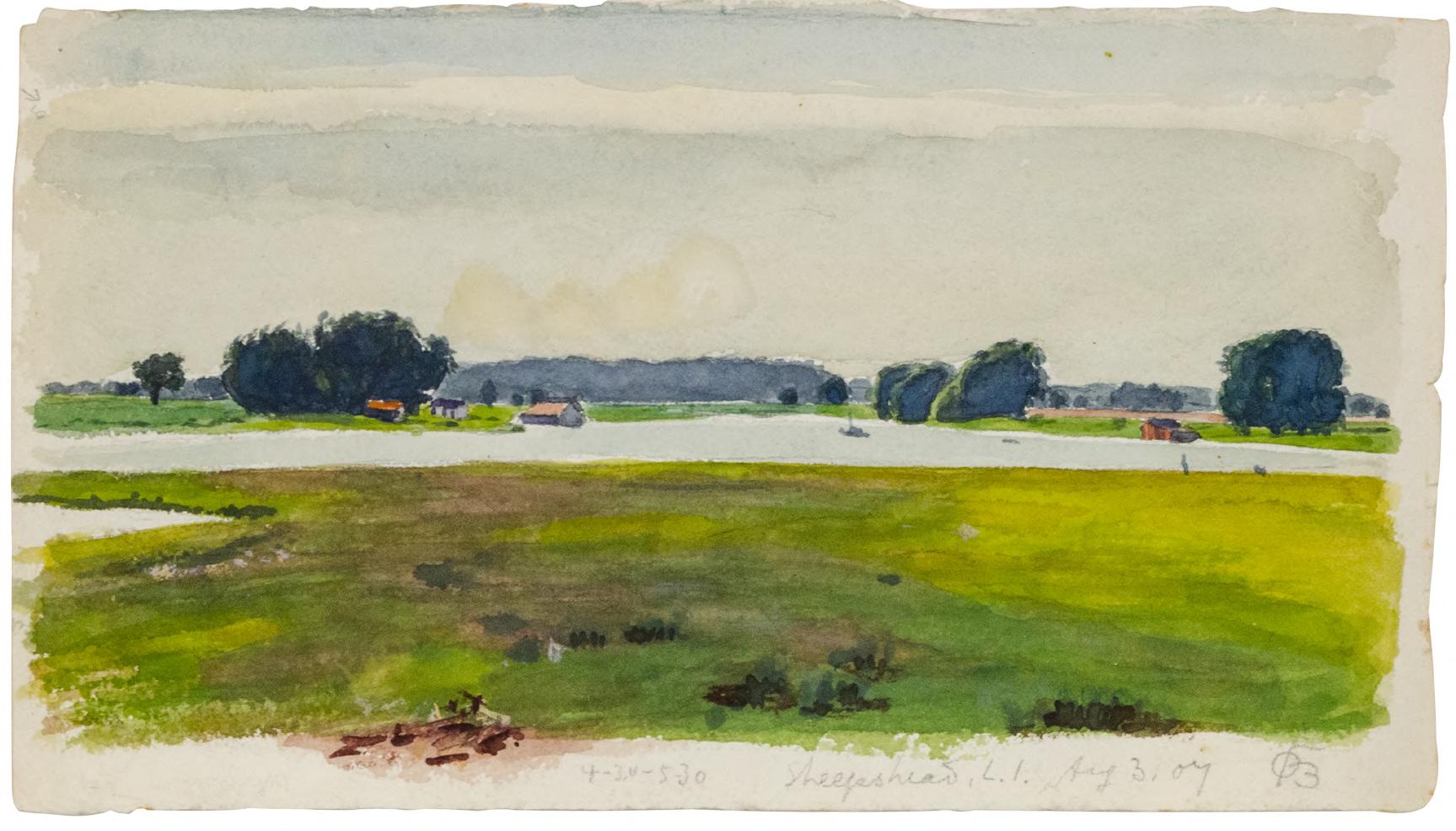
Oscar Bluemner (American, 1867 - 1938)
Sheepshead, Long Island, 1907
Watercolor on paper
6 x 10 inches
Signed with the artist's conjoined initials "OB" and dated "4-30 - 5 - 30" / "Aug 3, 07"
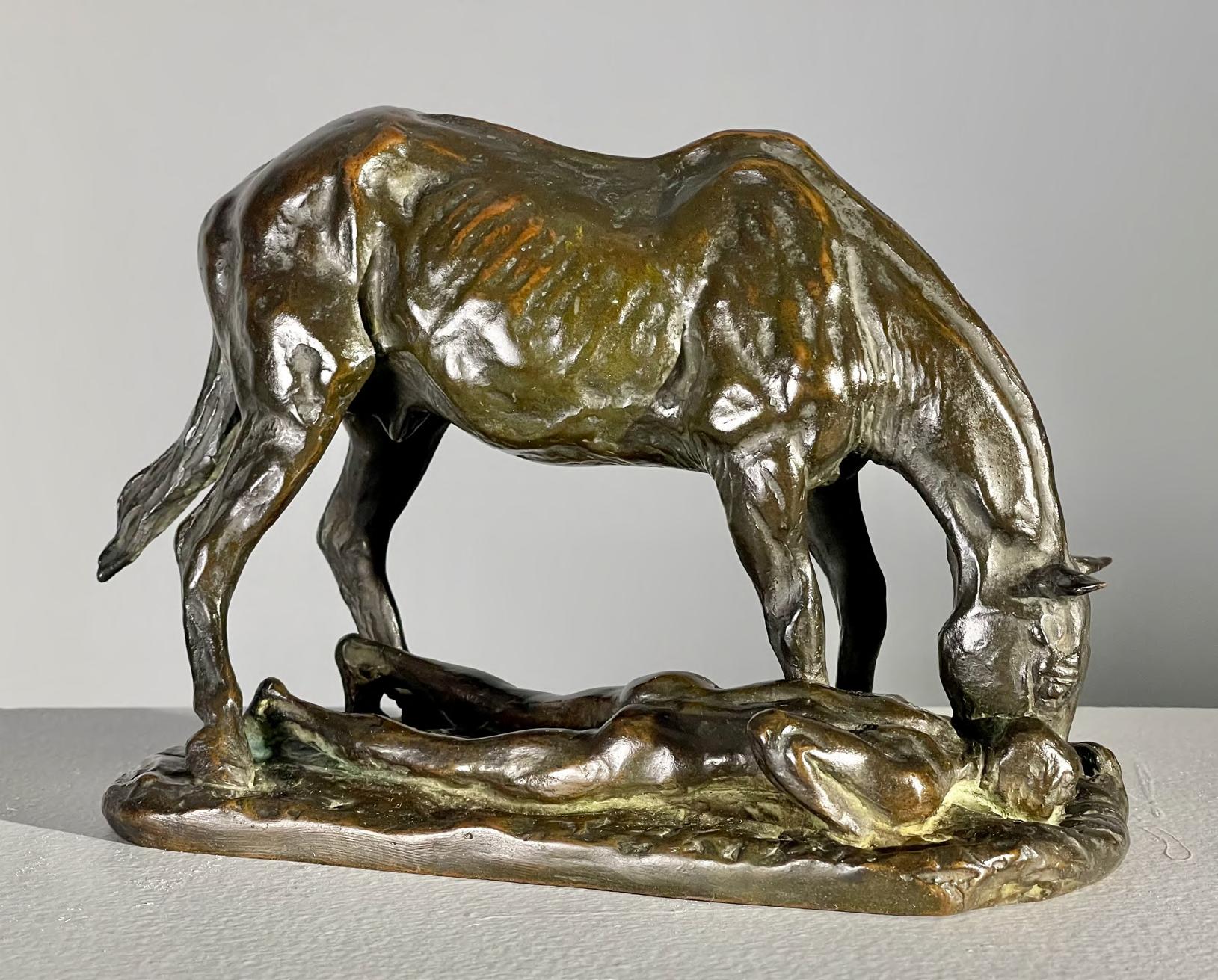
Charles Cary Rumsey (American, 1879 - 1922)
Horse and Figure at the Waterhole, circa 1910
Bronze, dark brown patina
6 1/8 H. x 9 1/4 W. x 3 7/8 D. inches
Signed: C C Rumsey; Inscribed on base: ROMAN BRONZE WORKS N.Y.
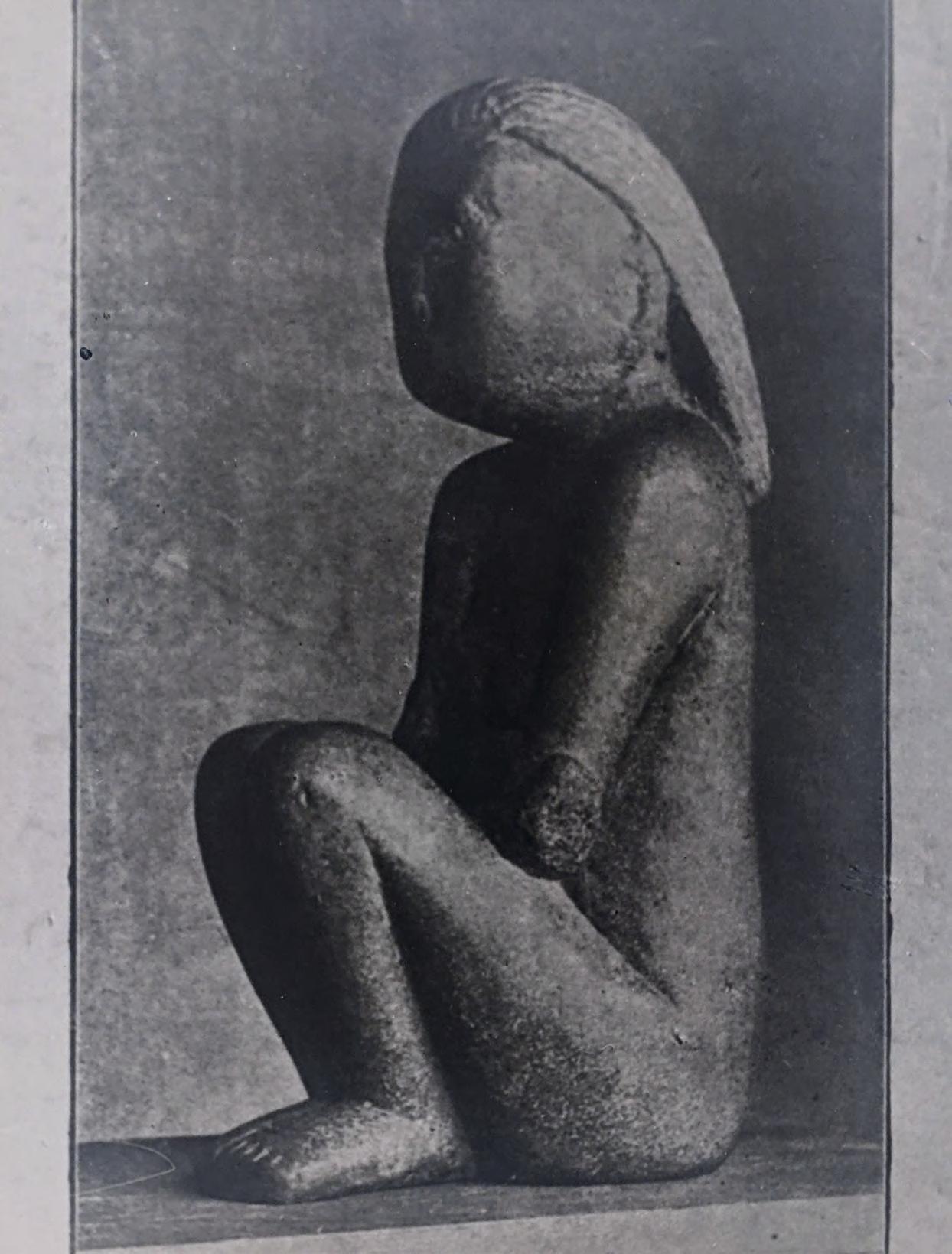
Constantine Brancusi (Romanian/French, 1876 - 1957)
La Sagesse de La Terre, 1908
Gelatin silver print
9 1/4 x 7 inches
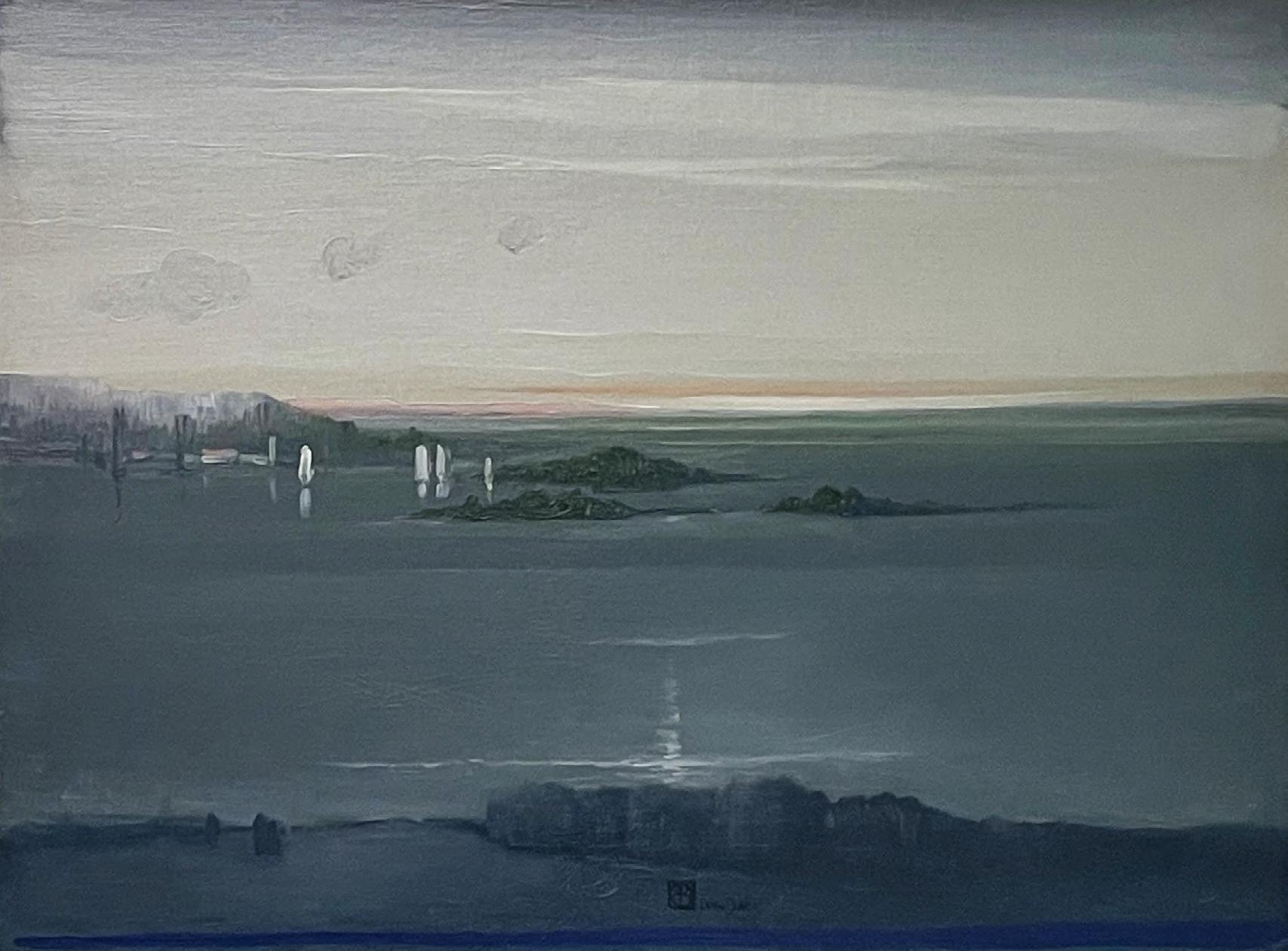
Leon Dabo (American, 1864 - 1960)
Seashore, Dawn, 1909
Oil on canvas
21 x 28 inches
Signed lower center
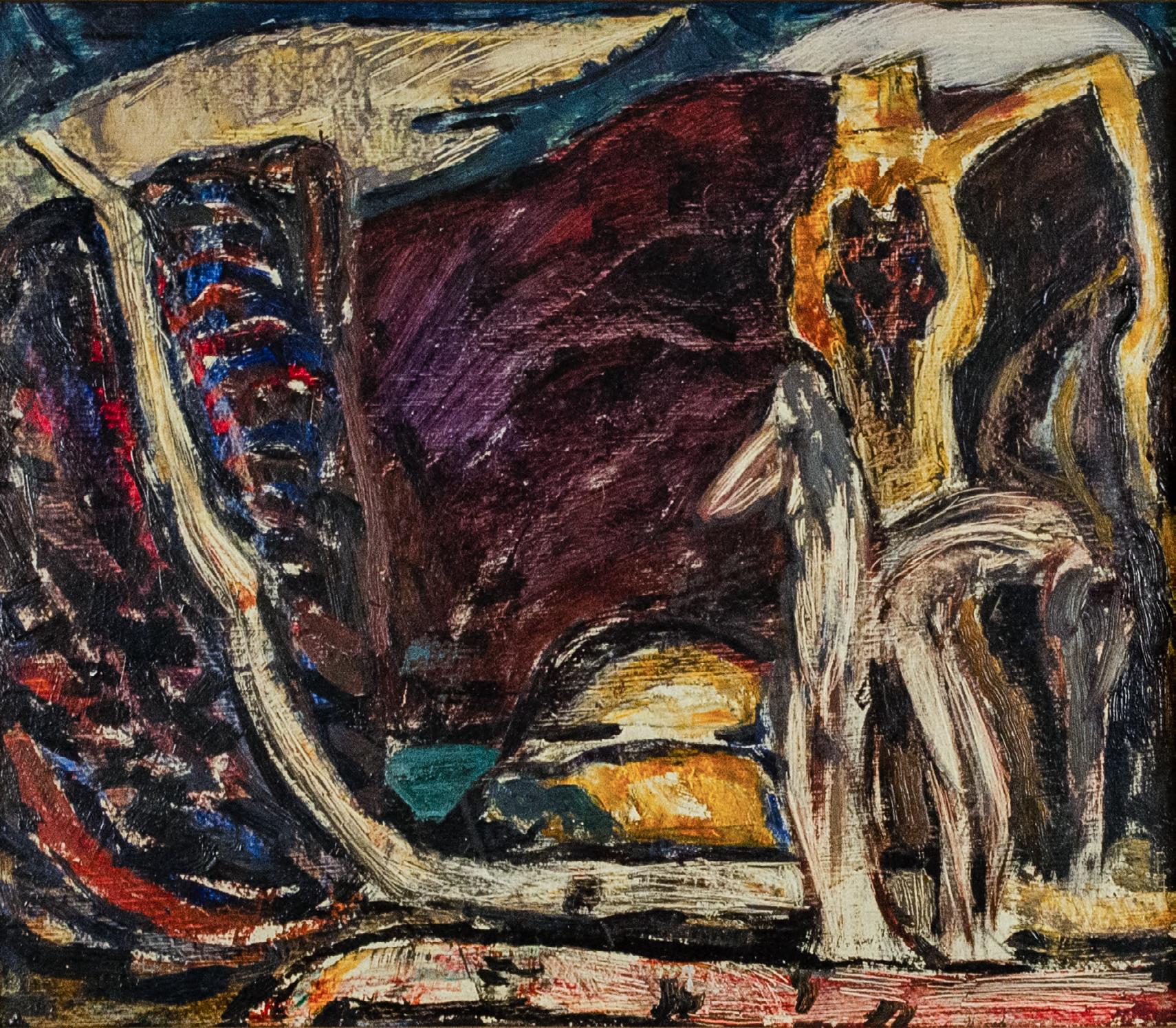
Marsden Hartley (American, 1877 - 1943)
Landscape No. 24, circa 1909-10
Oil on board
12 x 14 inches
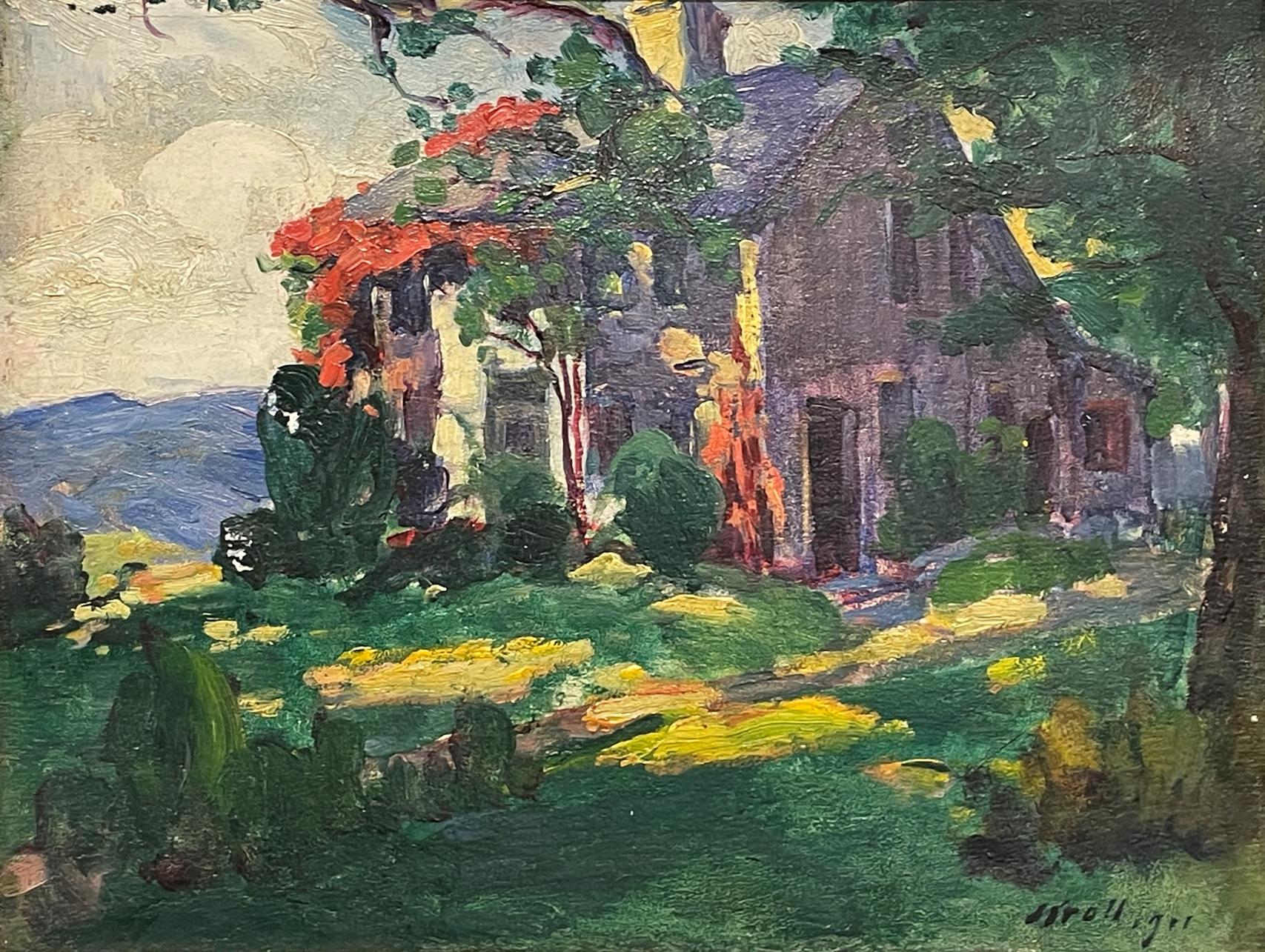
Leon Kroll (American, 1884 - 1974)
Revolutionary Guard House for General Putnam's Army,West Redding, Connecticut, 1911
Oil on panel
8 1/2 x 10 3/4 inches
Signed and dated lower right
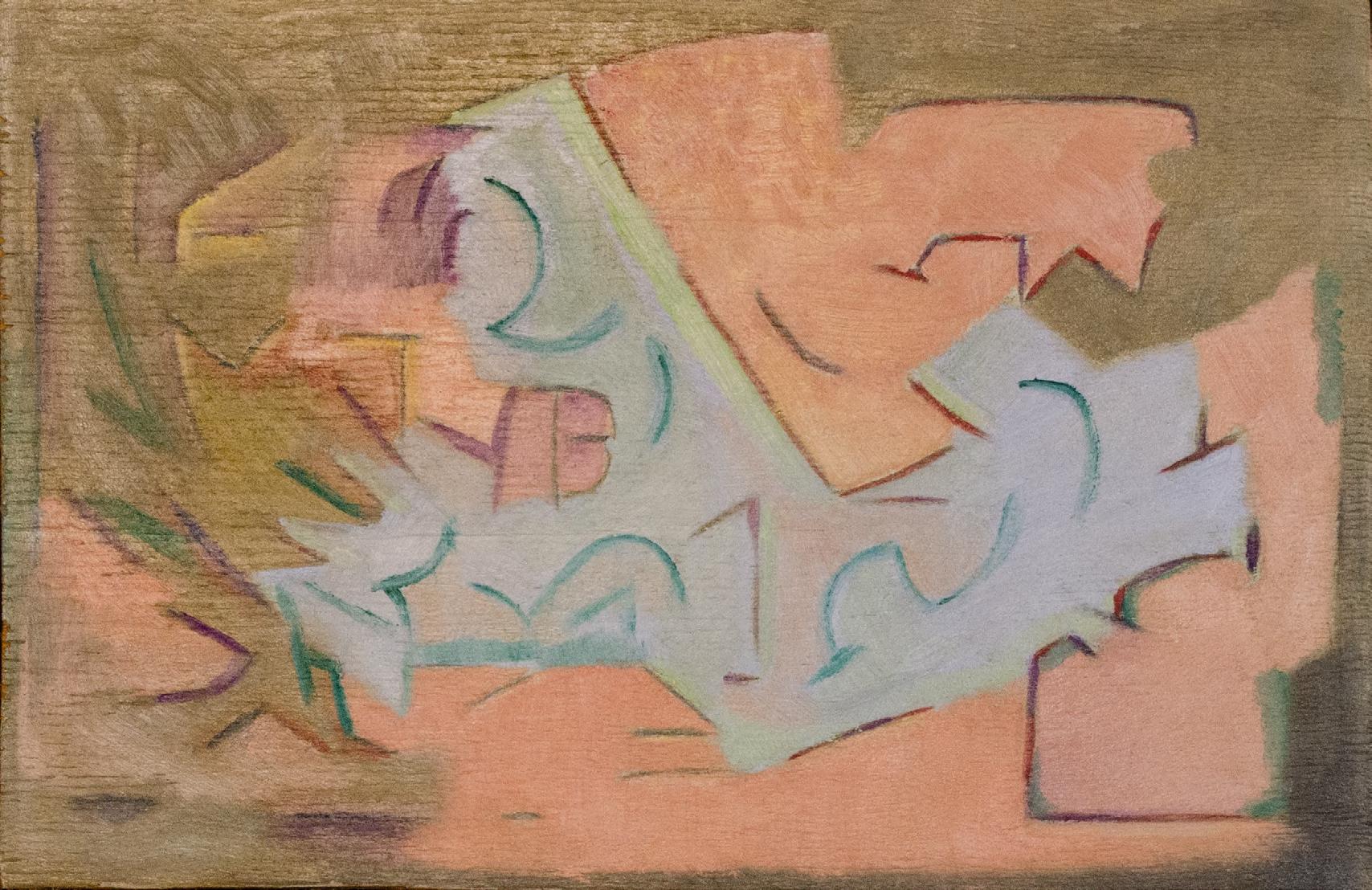
Dawson (American, 1887 - 1969)
10 x 15 inches
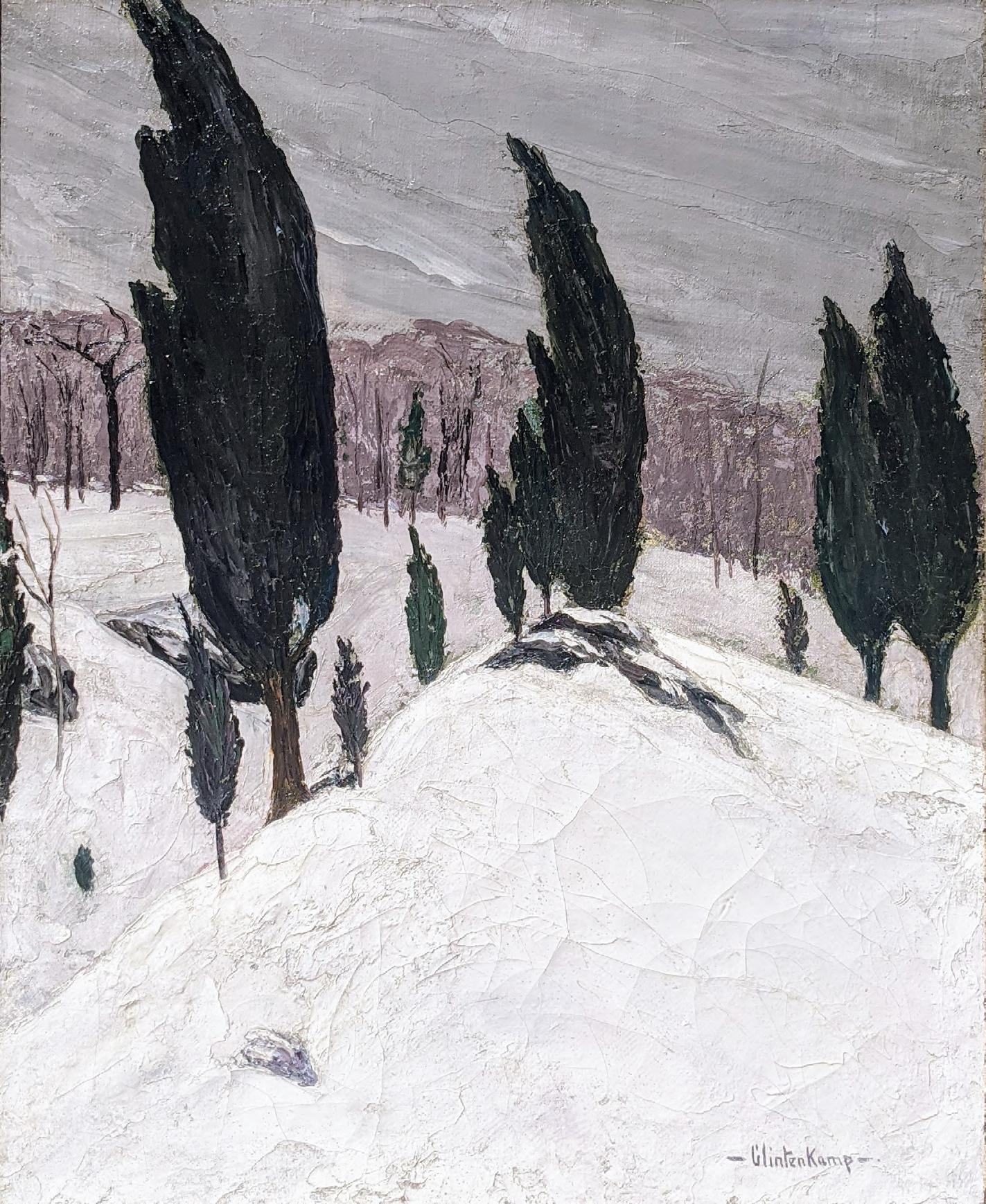
Henry Glintenkamp (American, 1887 - 1946)
Poplars in Winter, 1912
Oil on burlap
32 x 26 inches
Signed lower right
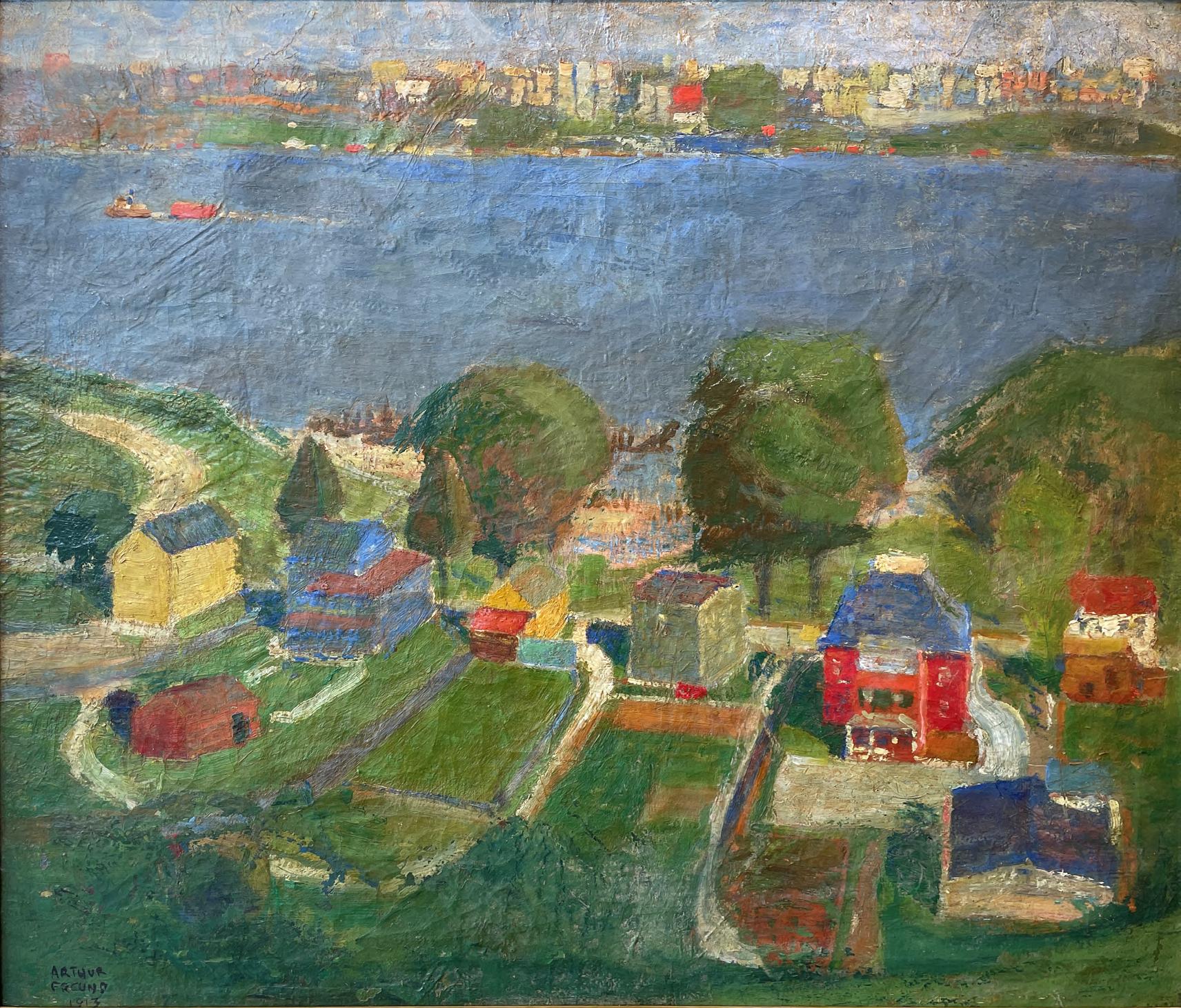
Signed and dated lower left
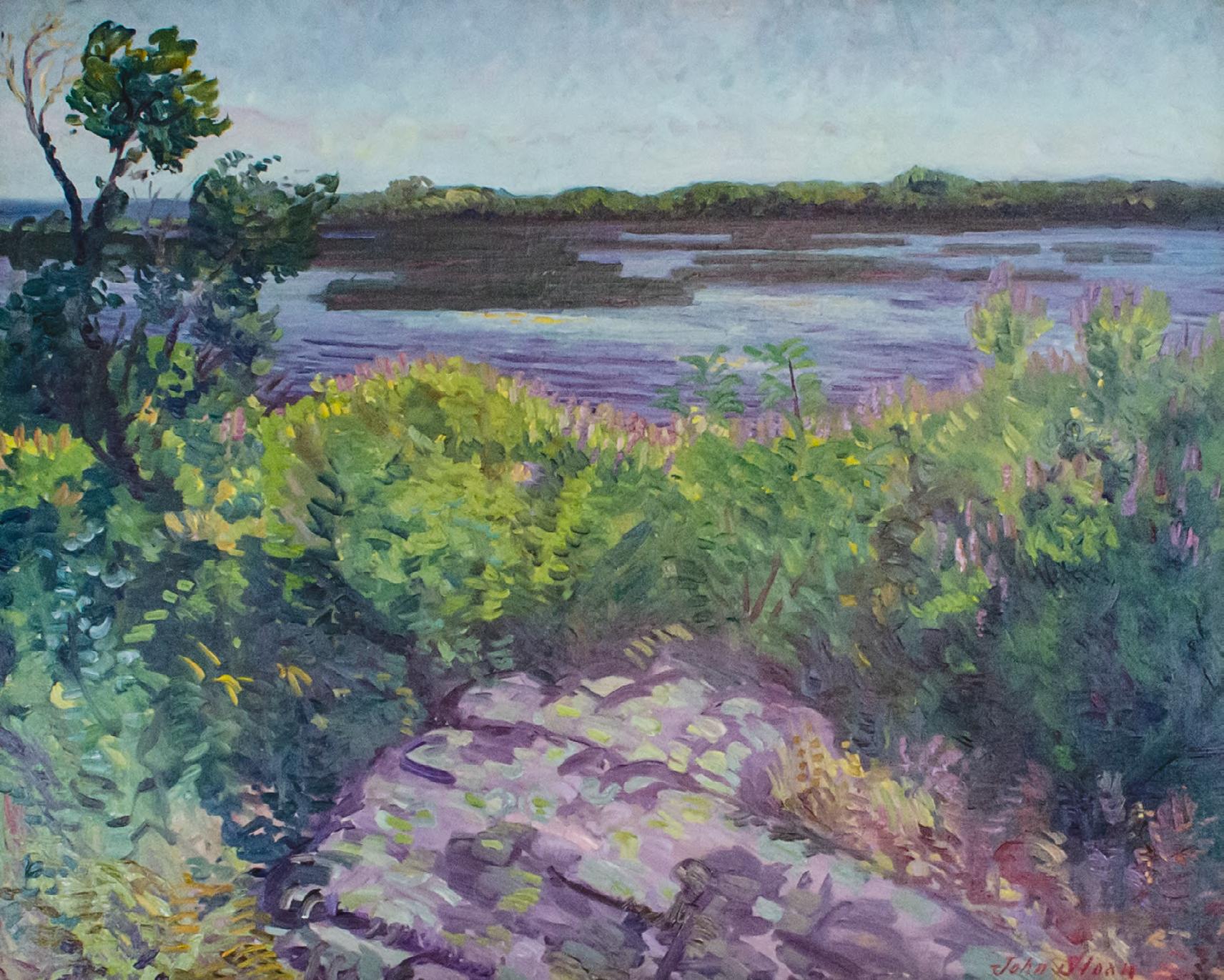
John Sloan (American, 1871 - 1951)
Niles Pond, Gloucester, 1914
Oil on canvas
26 x 32 inches
Signed lower right
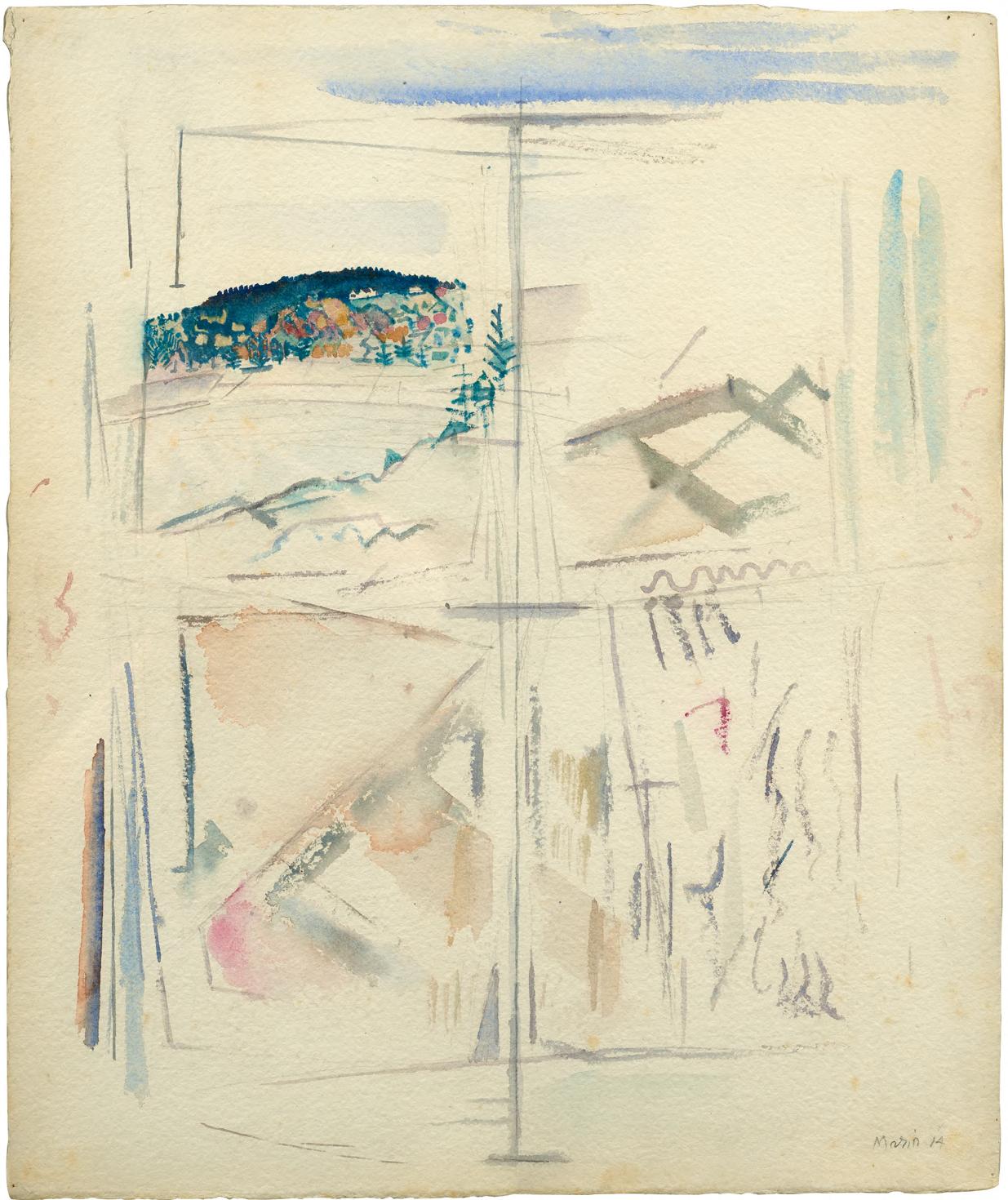
John Marin (American, 1870 - 1953)
Looking out the Window, West Point, Maine, 1914
Watercolor and graphite on paper
19 1/2 x 15 3/4 inches
Signed and dated at lower right: Marin 14 // inscribed in Alfred Stieglitz's hand on an original label affixed to the reverse: Looking out the Window, Deer Isle— [sic] / Maine / by John Marin— / 1914
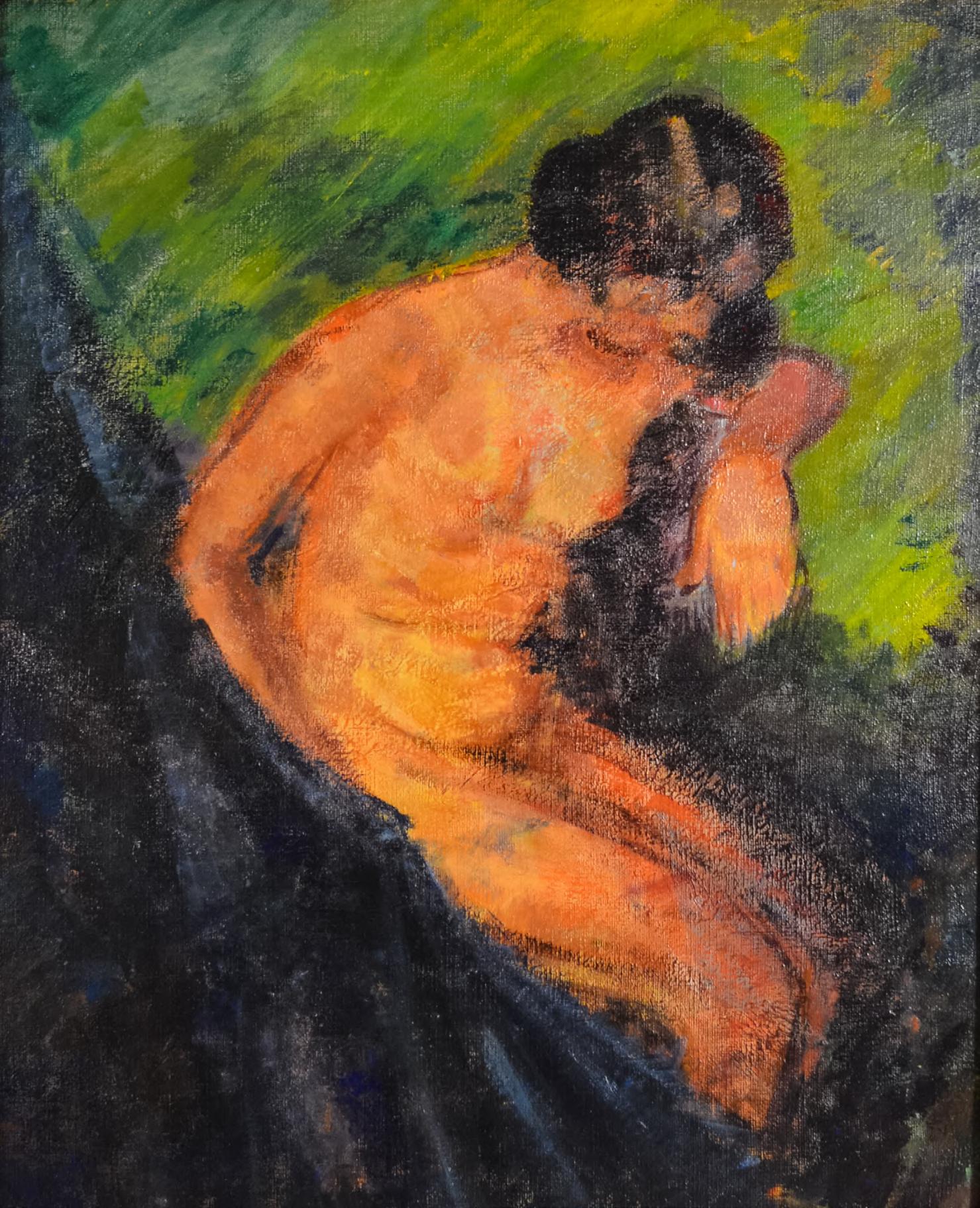
Edith Dimock (American, 1876 - 1955)
Female Nude, circa 1915
Oil on canvas
34 1/2 x 28 1/4 inches
Signed lower left
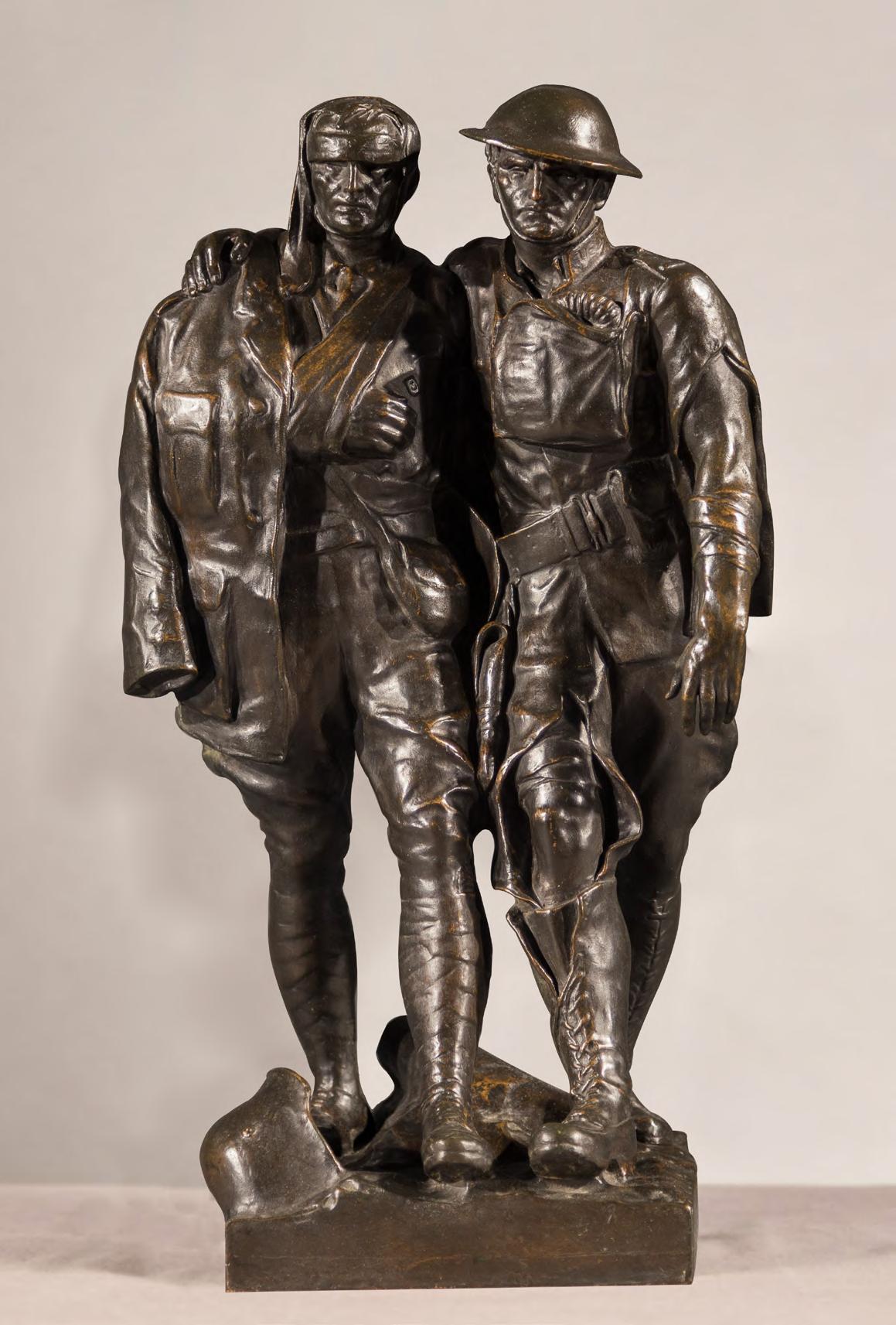
Robert Ingersoll Aitken (American, 1878 - 1949)
Brothers-in-Arms, 1920
Bronze, dark brown patina
20 H. x 11 W. x 8 D. inches
Signed on base: AITKEN
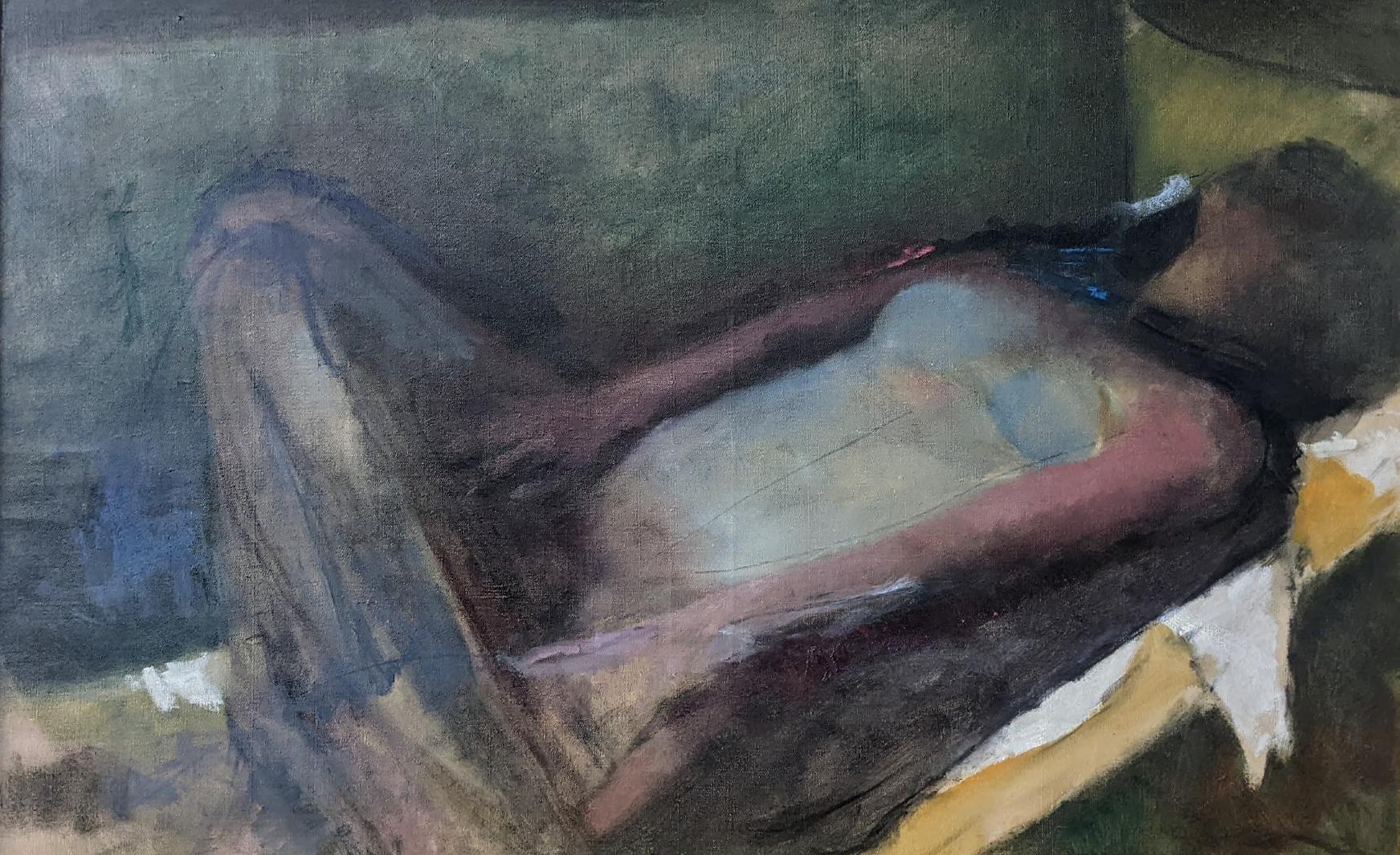
Arthur B. Carles (American, 1882 - 1952)
Reclining Nude, circa 1920
Oil on canvas
32 x 51 inches
Inscribed "Mercedes Matter" on the overlap
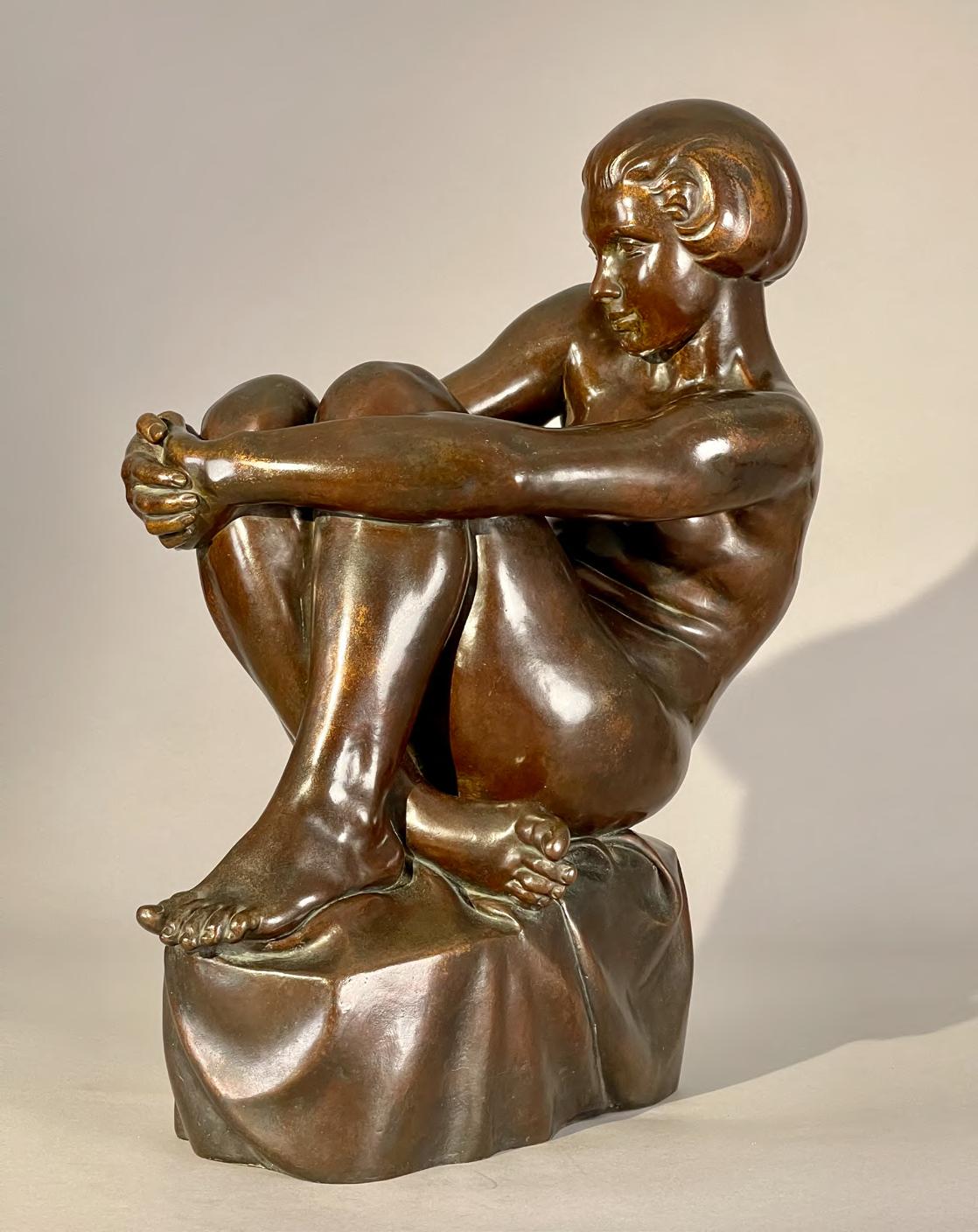
Cecil de Blaquiere Howard (American, 1888 - 1956)
Meditation, 1920
Bronze, brown patina
20 1/4 H. x 11 1/2 W. x 16 D. inches
Signed on base: HOWARD
Foundry stamp: cire perdue C. Valsuani (Paris)
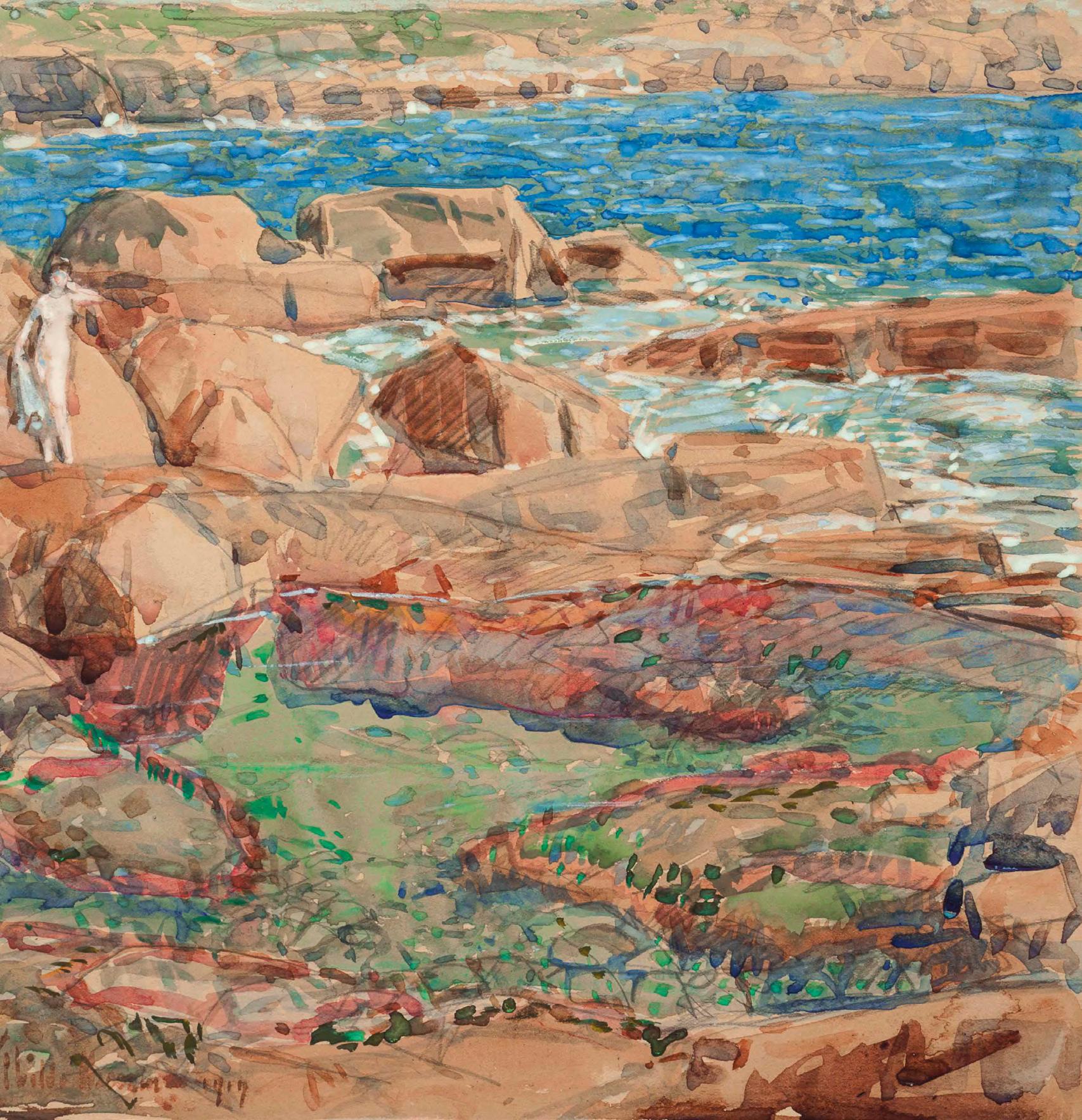
Childe Hassam (American, 1859 - 1935)
The Pretty Pool, Bass Rocks, 1919
Watercolor and gouache and pencil on paper
Sight: 10 1/4 x 9 7/8 inches
Signed and dated lower left
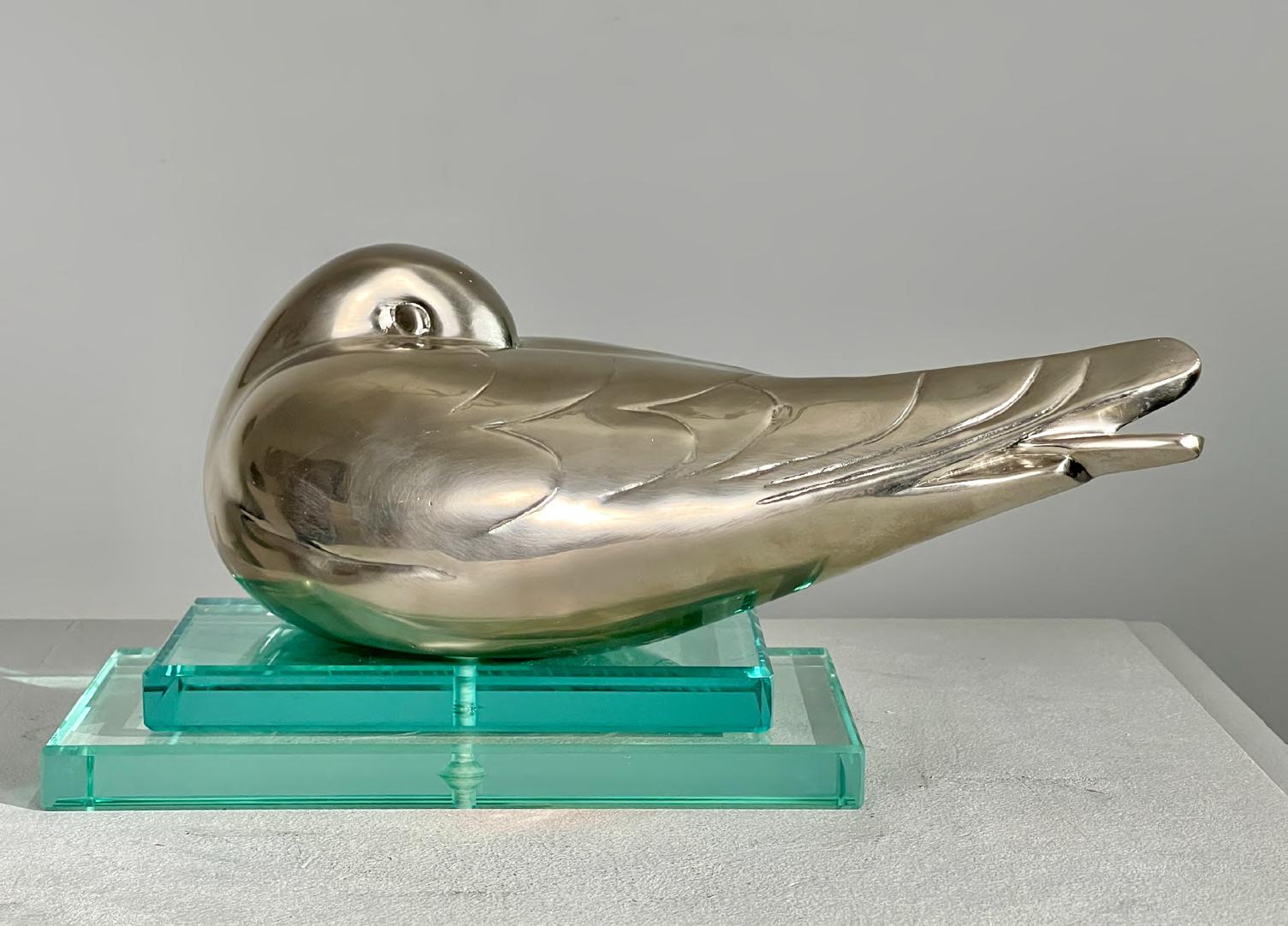
Gaston Lachaise (American, 1882 - 1935)
Sleeping Gull, Modeled 1920-24, cast 2022
Nickel-plated bronze on a two-tiered glass base
4 1/2 H. x 12 W. x 4 D. inches
Signed "G. Lachaise c. 1927” under tail feather; Inscribed LACHAISE ESTATE
3/12 MA [Modern Art Foundry]
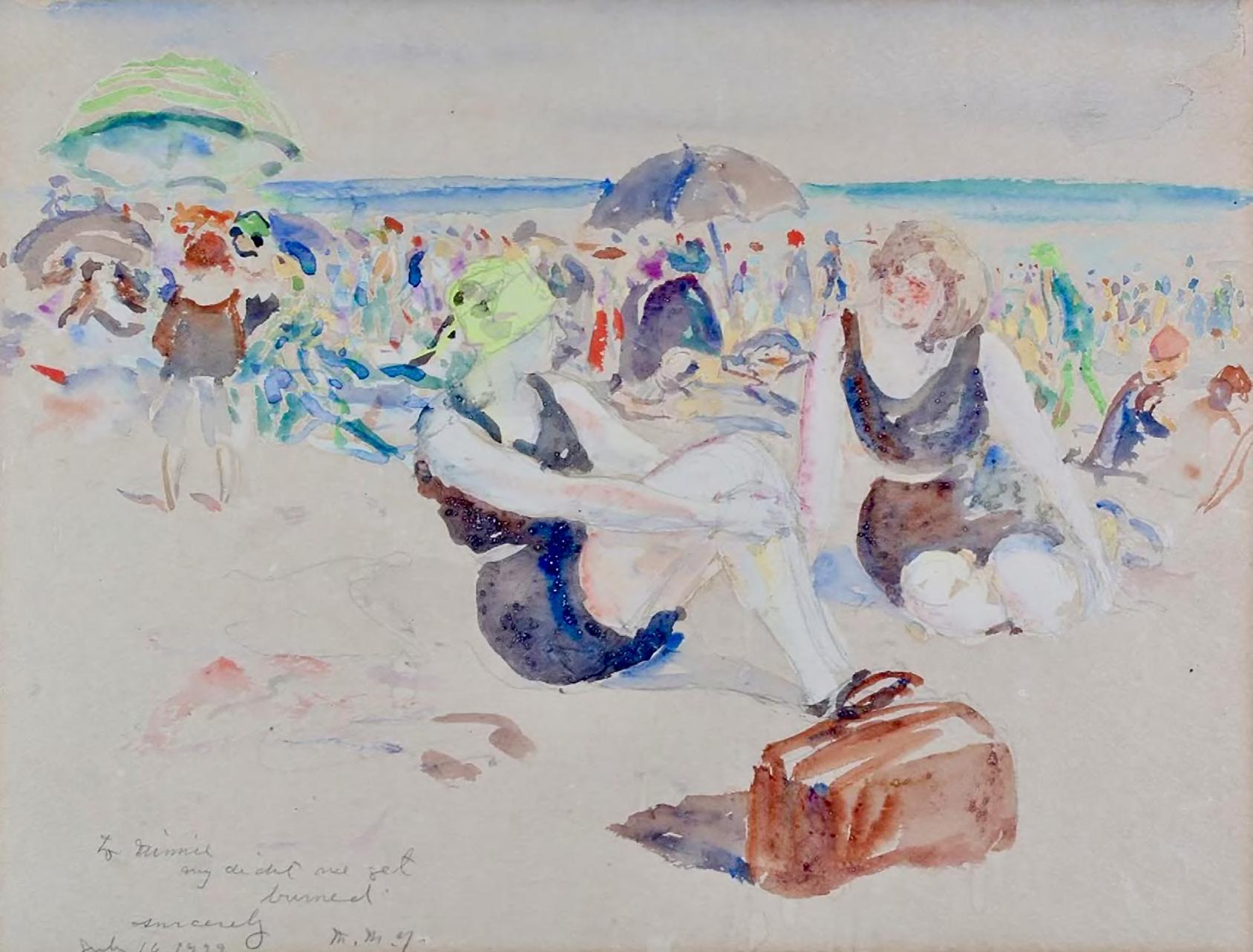
Mahonri Young (American, 1877 - 1957)
Beach Scene, Port Washington, N.Y., July 16, 1922
Mixed Media on Paper 12 x 16 inches
Signed, dated, and inscribed at lower left
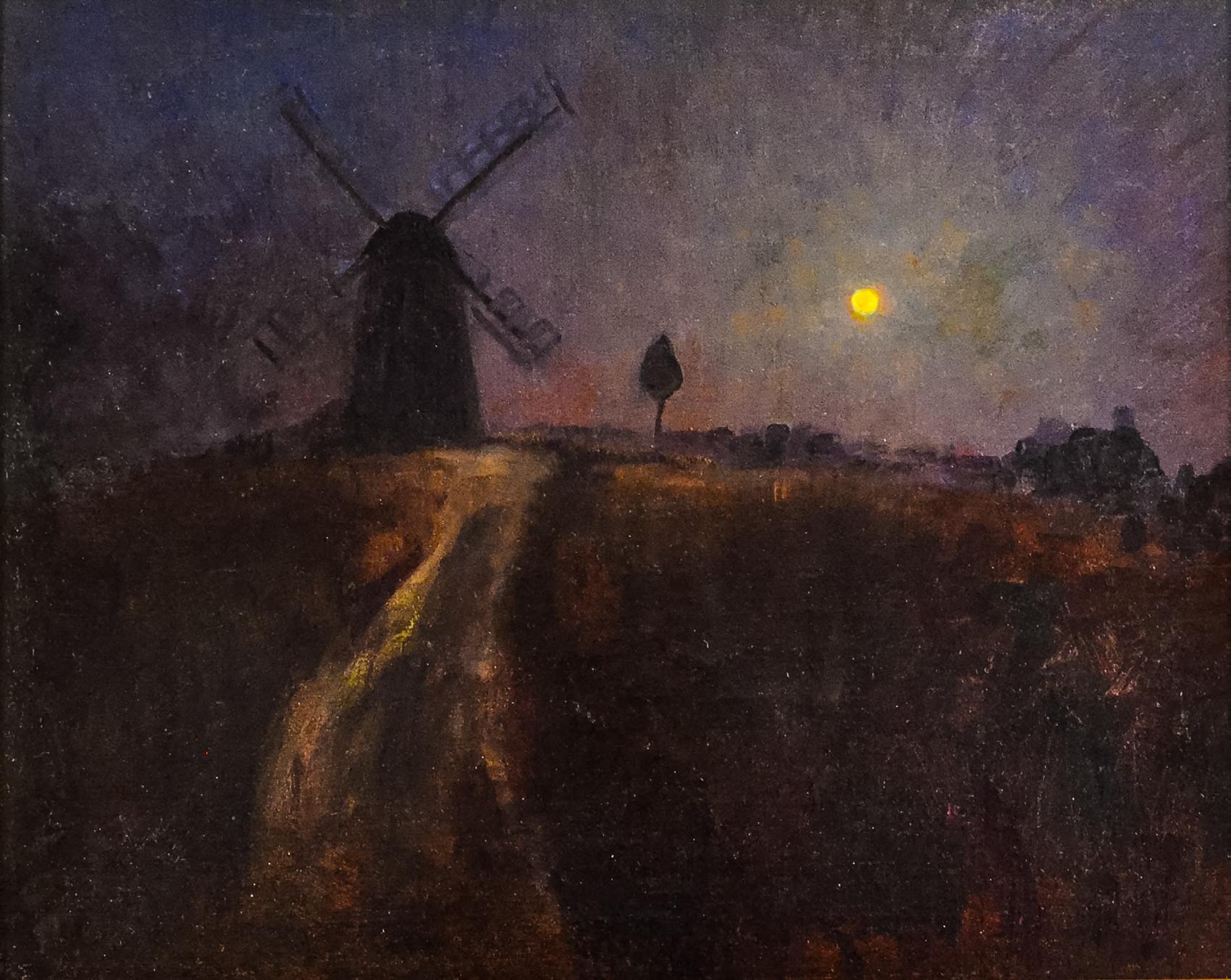
Agnes Pelton (American, 1881 - 1961)
Hayground Windmill, Bridgehampton, circa 1920-22
Oil on canvas
20 x 25 inches
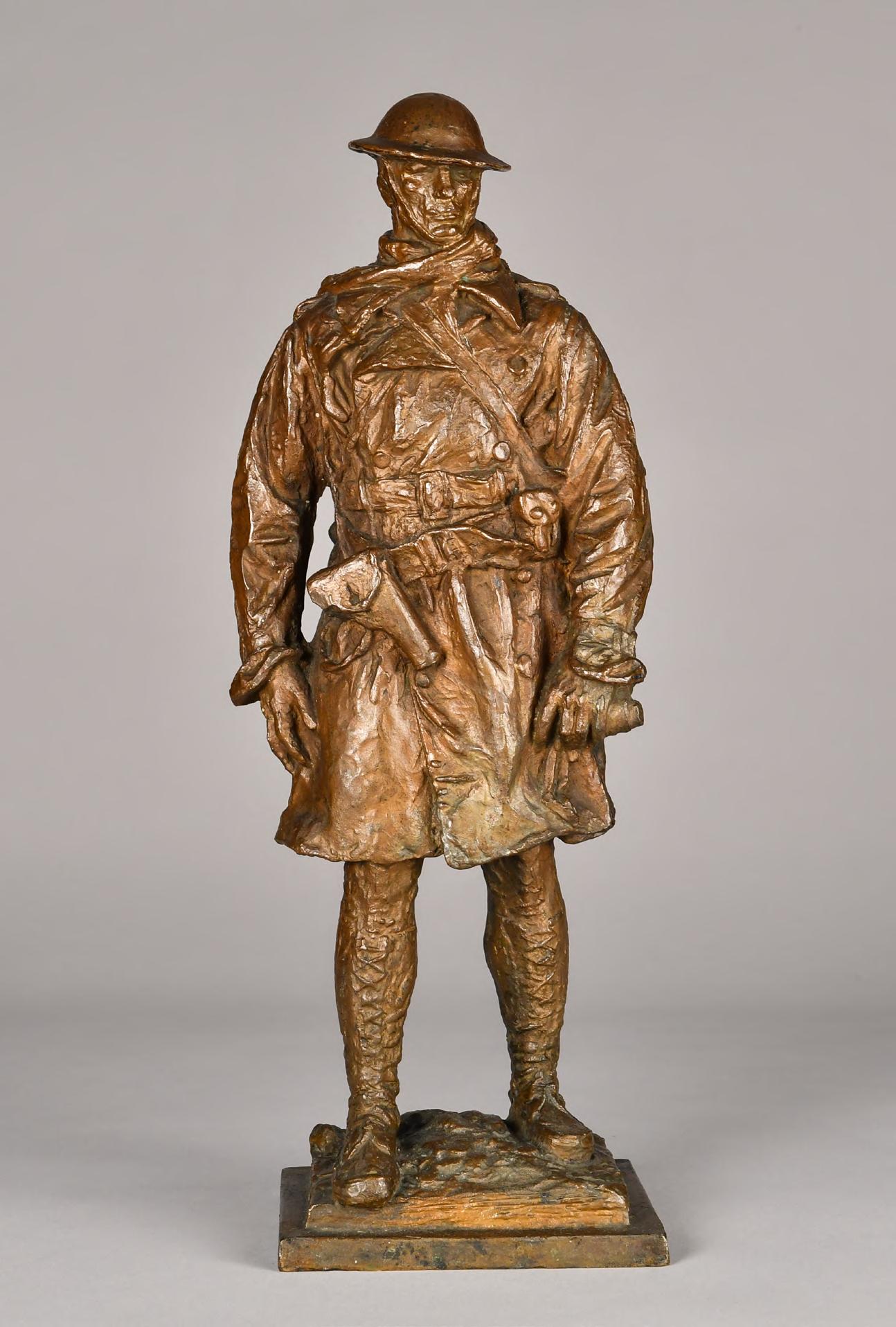
James Earle Fraser (American, 1876 - 1953)
Canadian Officer, 1921
Bronze, brown patina
16 5/8 H. x 6 1/8 W. x 4 1/2 D. inches
Signed at left vertical edge of base: Fraser © 1921
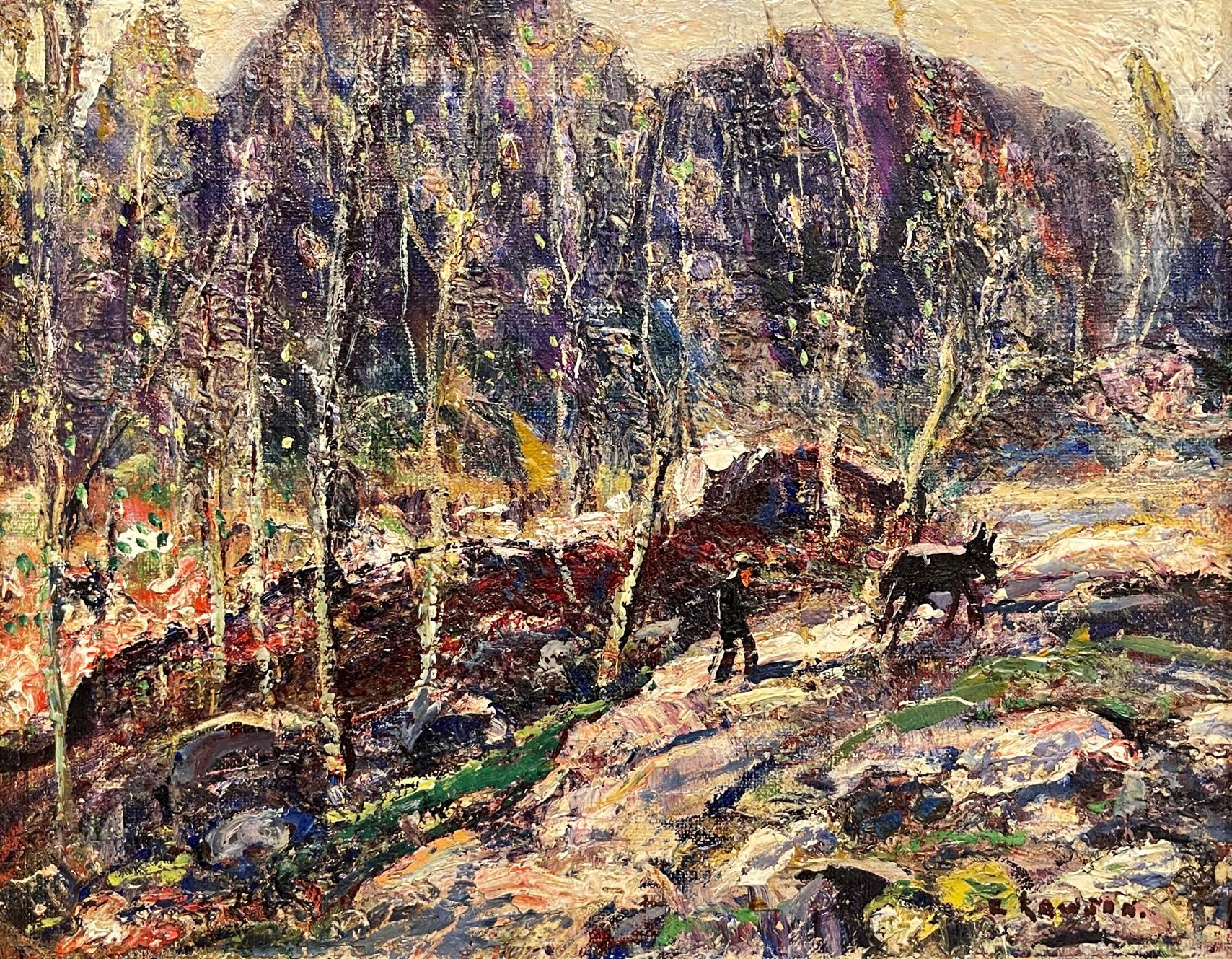
Ernest Lawson (American, 1873 - 1939)
Mountain Path, Colorado, circa 1927-29
Oil on canvasboard
11 x 14 1/2 inches
Signed lower right
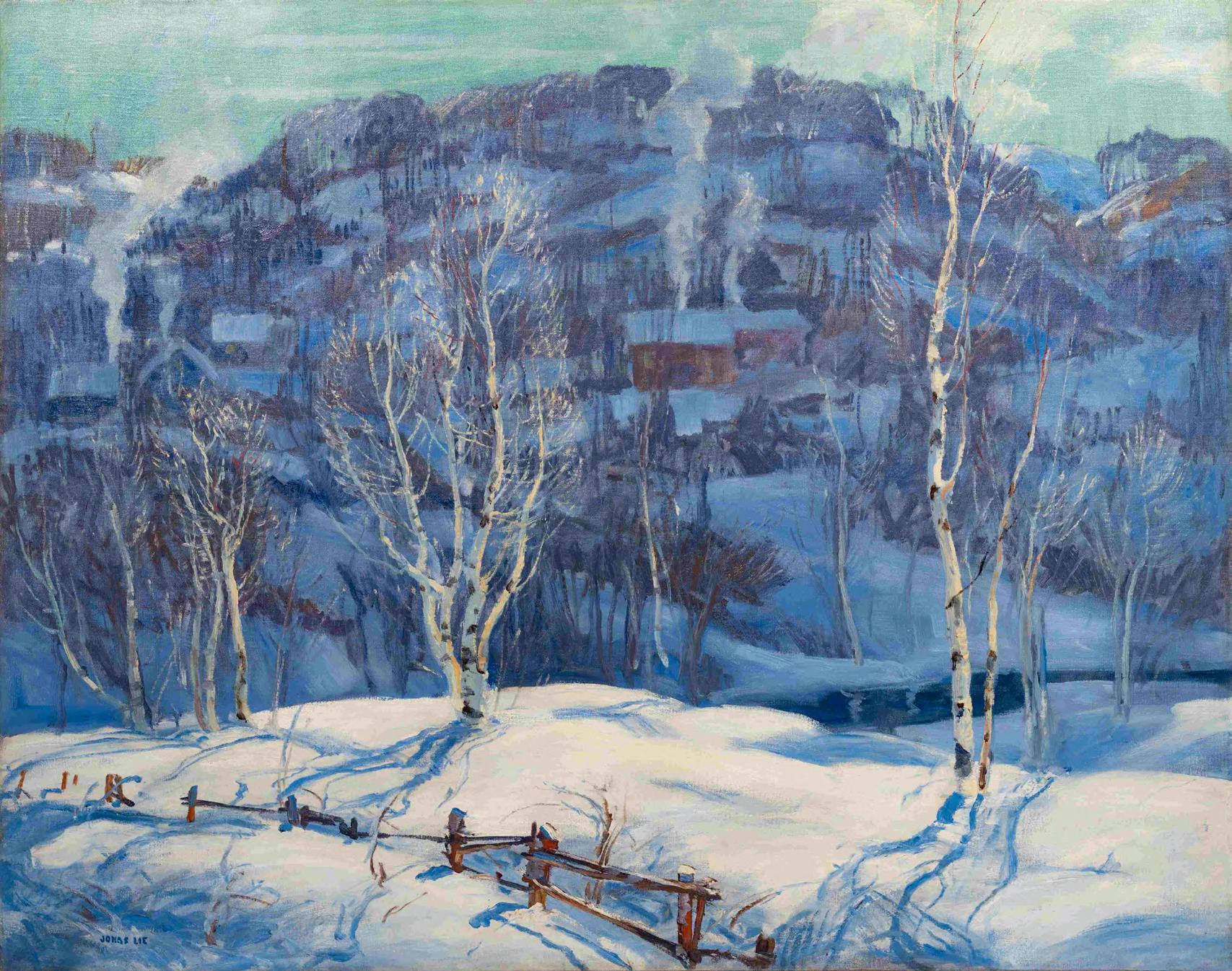
Jonas Lie (American, 1880 - 1940)
40 x 50 inches
Signed lower left
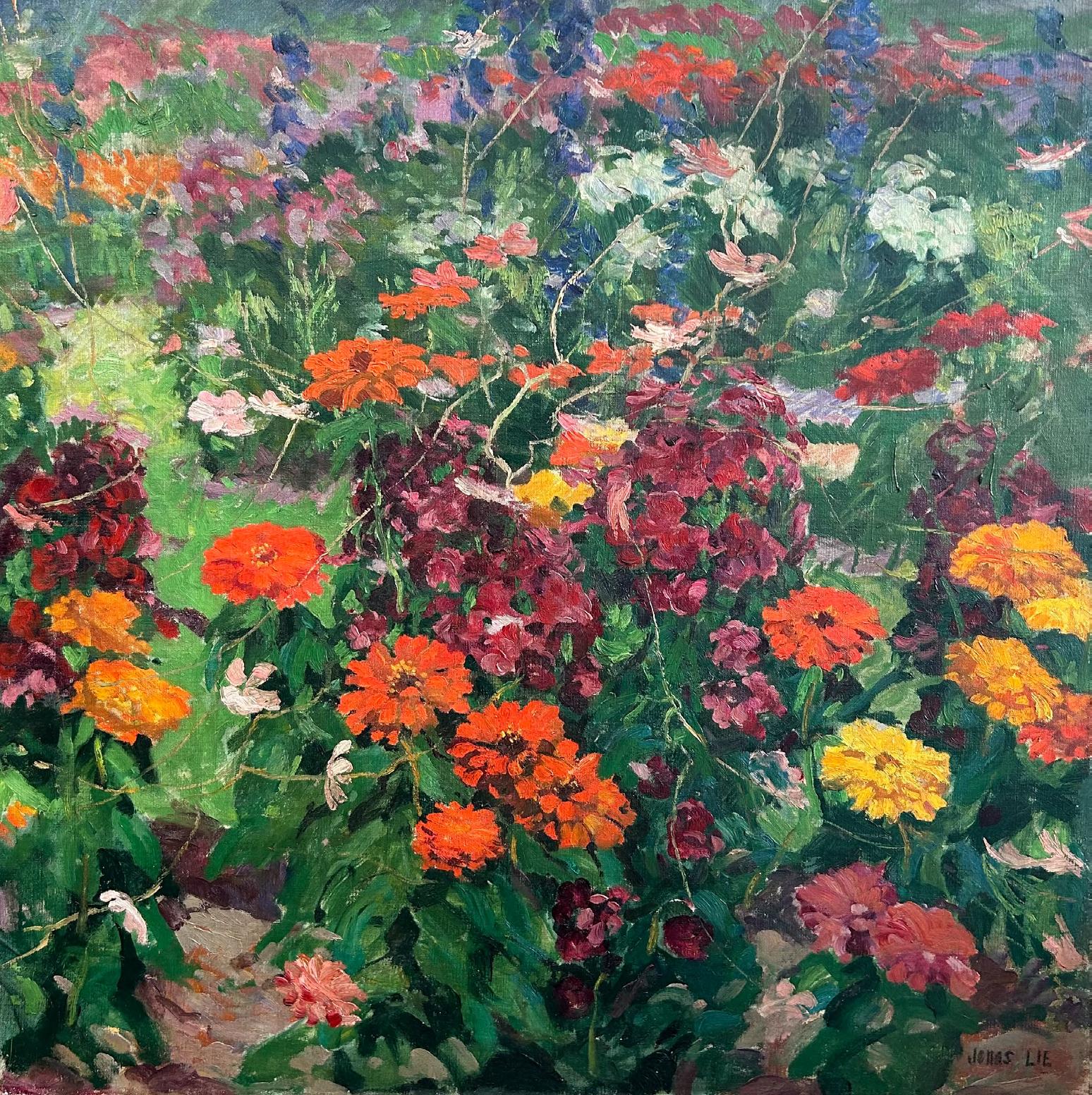
Jonas Lie (American, 1880 - 1940)
In My Garden, 1923
Oil on canvas
38 x 38 inches
Signed lower right
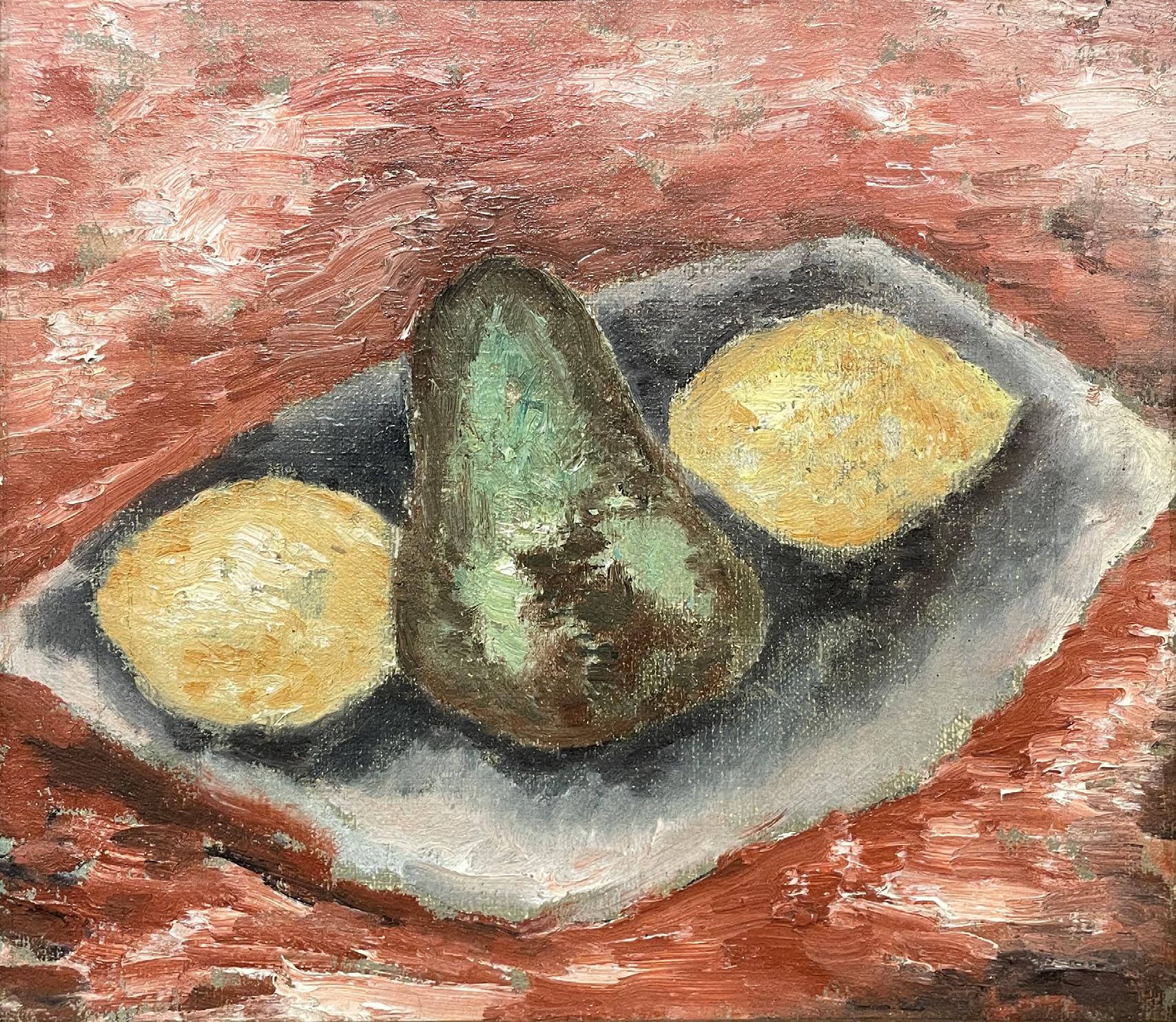
Marsden Hartley (American, 1877 - 1943)
Lemons and Pear, circa 1922-23
Oil on canvas
9 x 10 3/4 inches
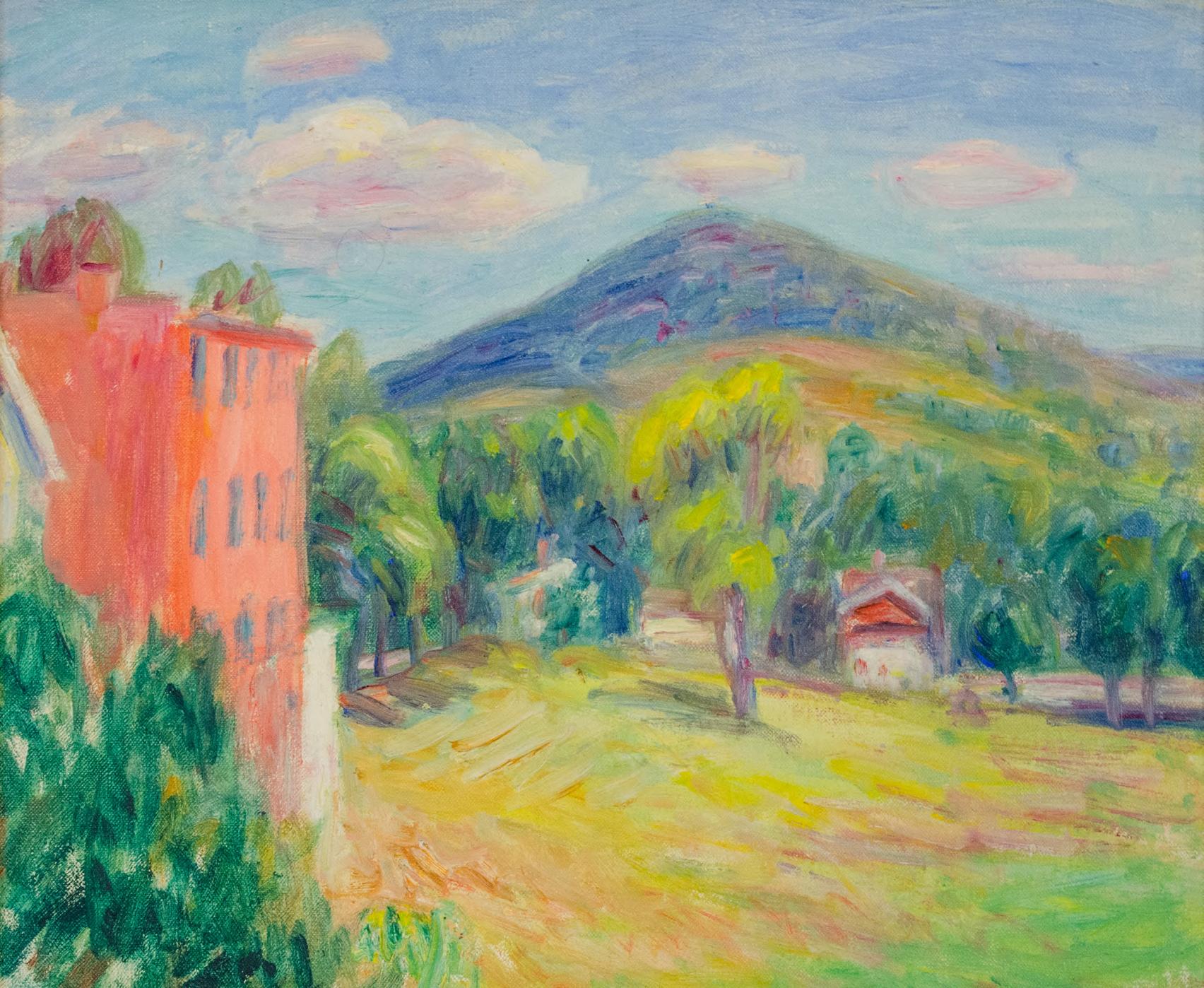
William Glackens (American, 1870 - 1939)
Southern French Landscape, circa 1925
Oil on board
11 3/4 x 14 inches
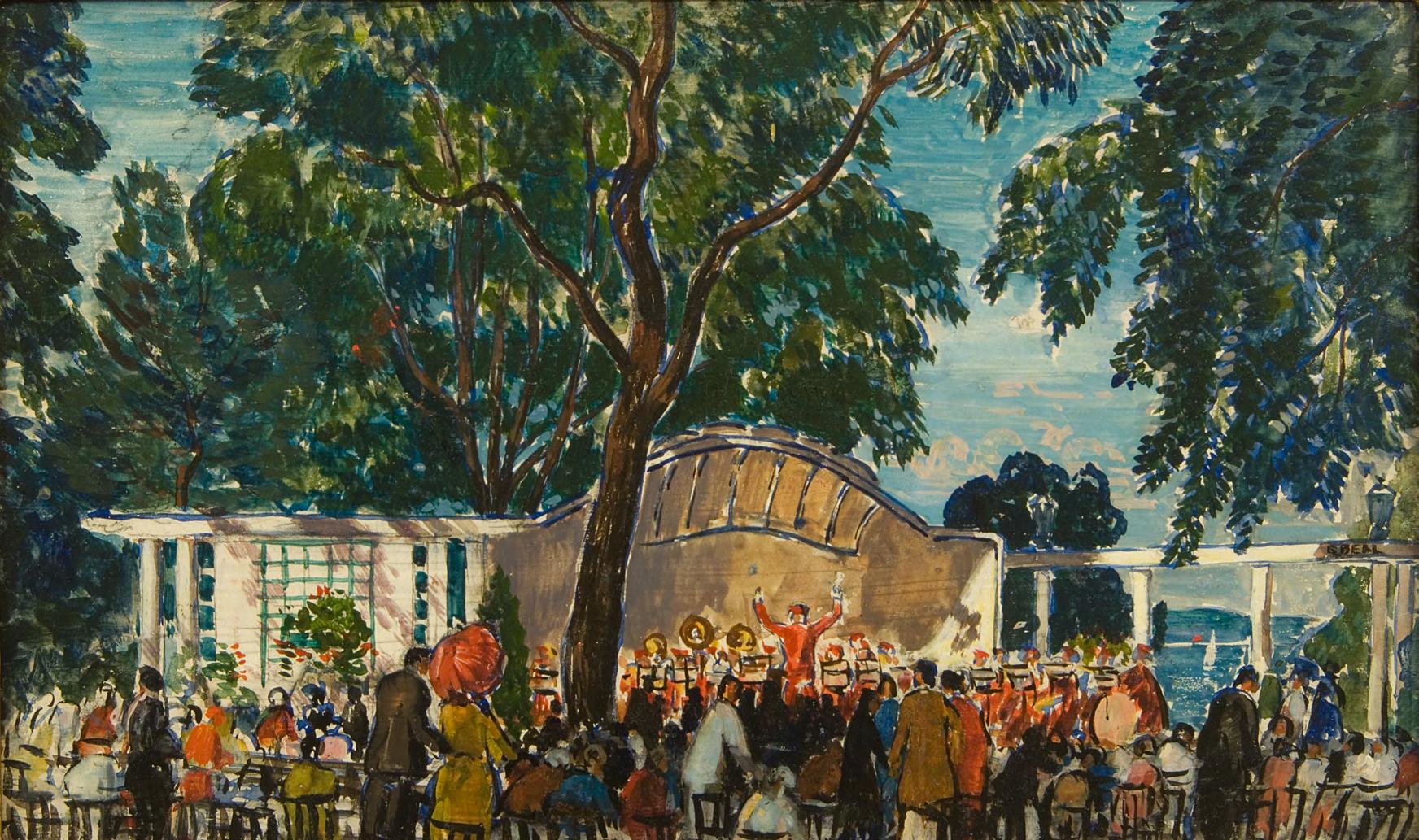
Gifford Beal (American, 1879 - 1956)
Bandstand, Salem, circa 1928
Oil on Masonite
11 1/4 x 20 inches
Signed lower right
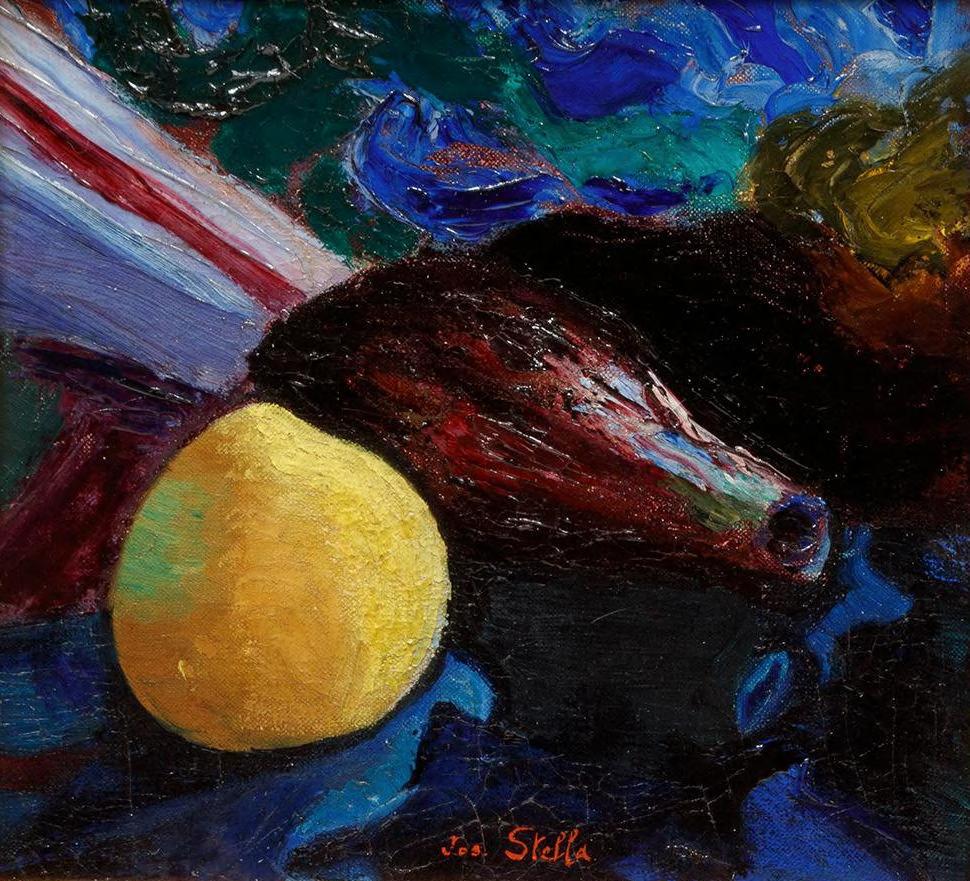
Joseph Stella (Italian/American, 1877 - 1946)
Lemon and Eggplant Still Life, circa 1929
Oil on canvas
10 x 11 inches
Signed lower center; signed on the stretcher and reverse and inscribed "Still Life" on the reverse
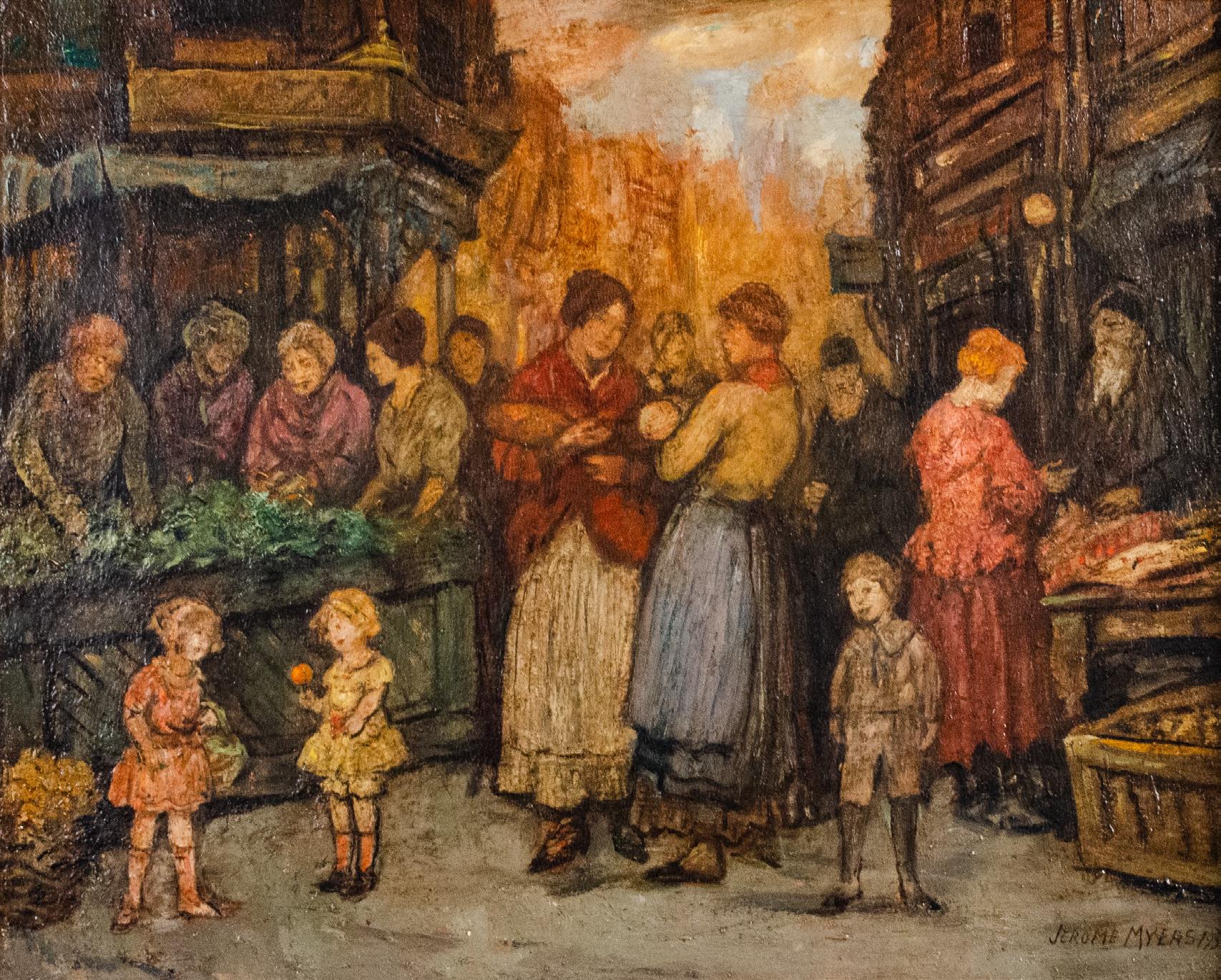
Jerome Myers (American, 1867 - 1930)
Lower East Side, 1930
Oil on canvas
16 x 20 inches
Signed lower right; signed, titled, and dated on the reverse
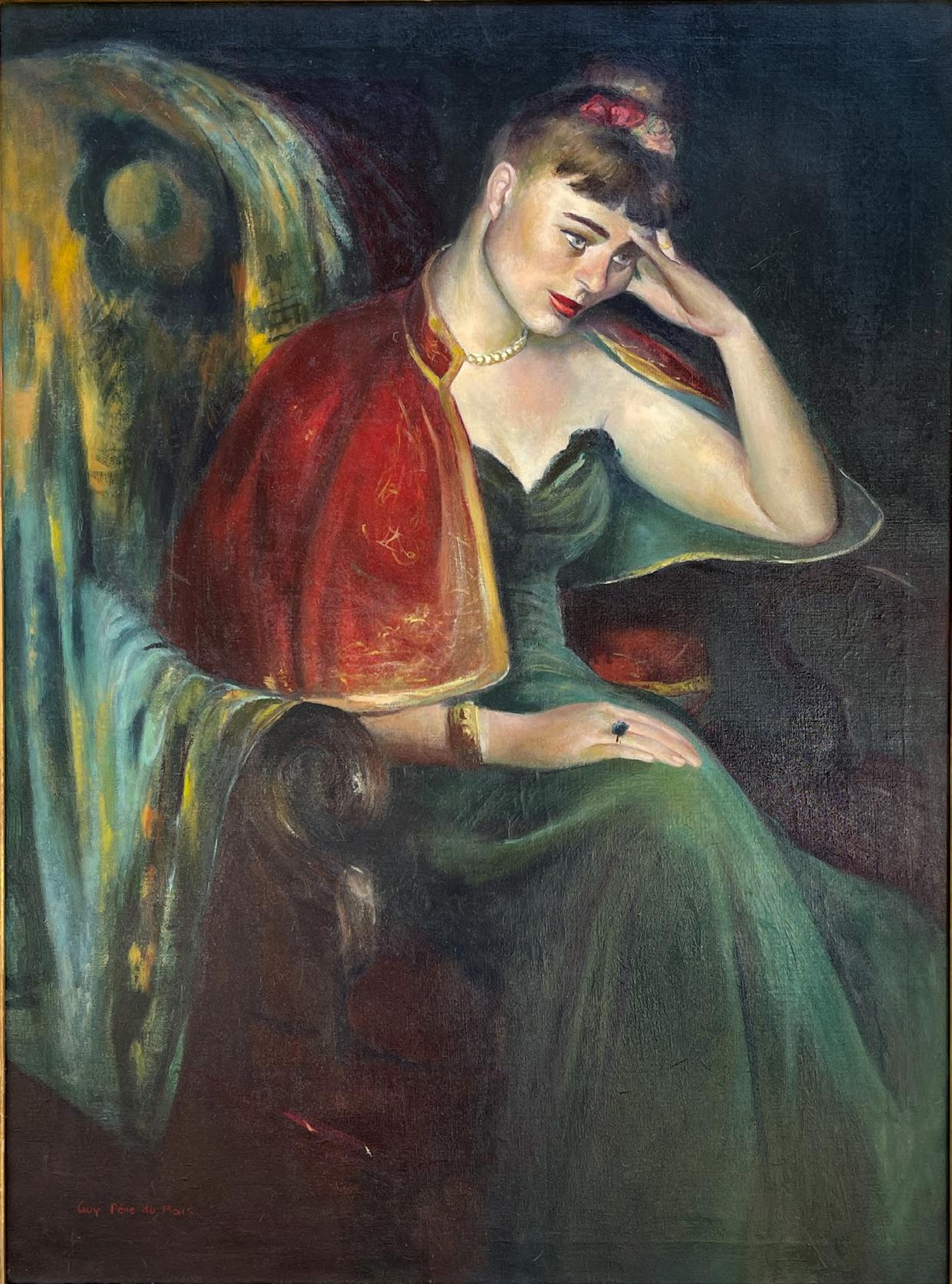
Guy Pène du Bois (American, 1884 -
Portrait of Yvonne, circa 1935
Oil on canvas
38 x 29 inches
Signed lower left: Guy Pène du Bois
1958)
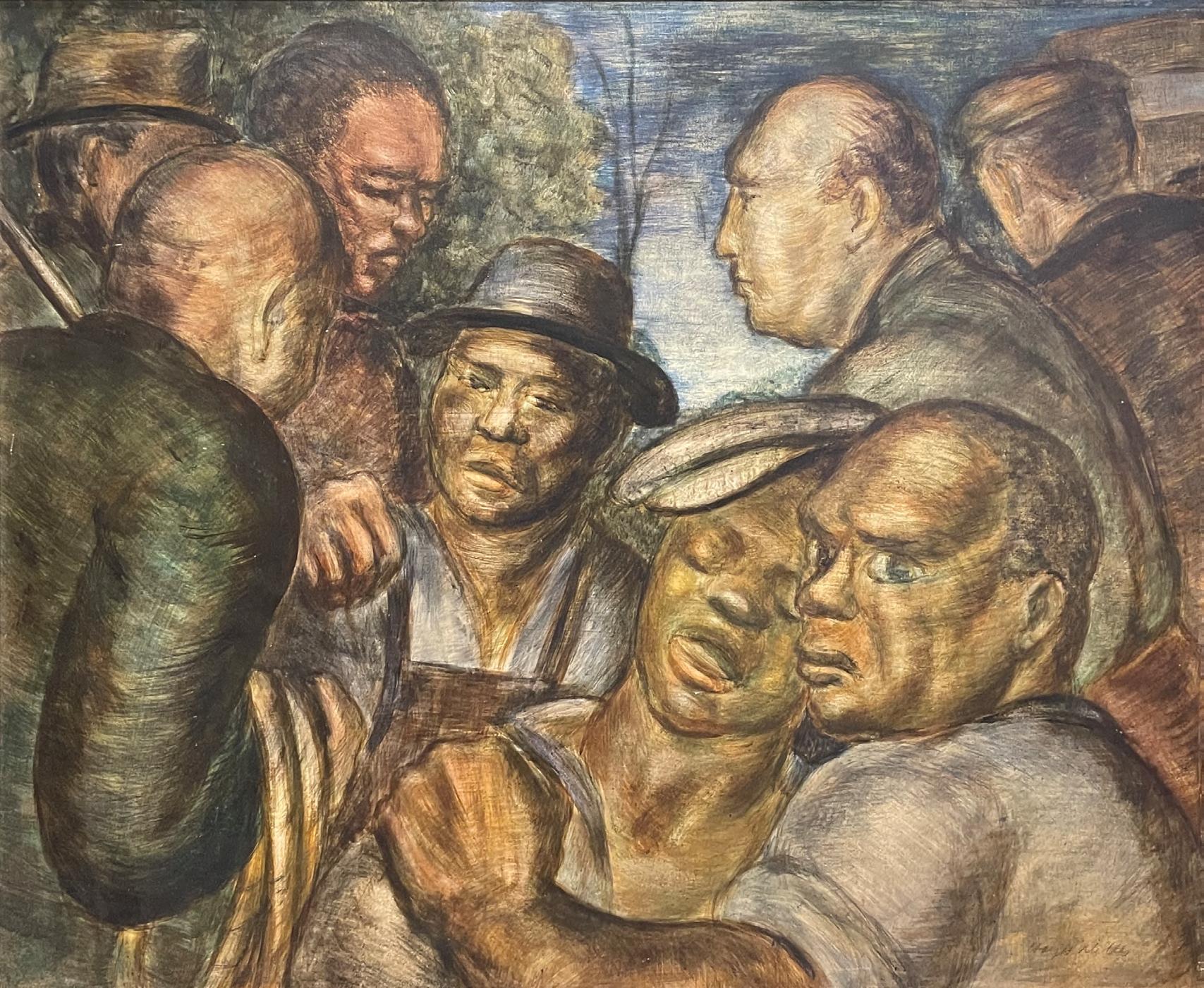
Kenneth Hayes Miller (American, 1876 - 1952)
Politicians
Oil on board
24 1/2 x 30 inches
Signed lower right
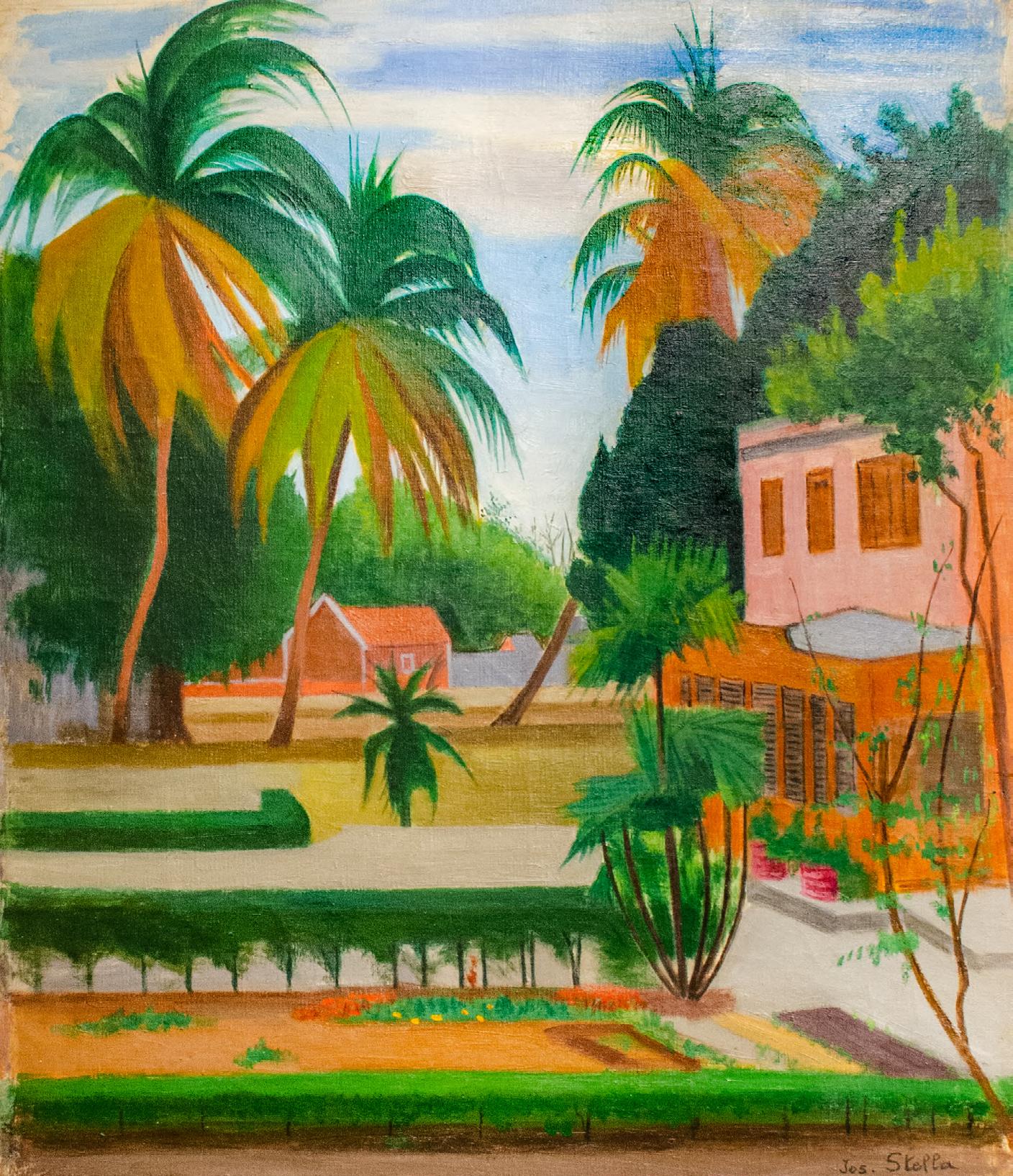
Joseph Stella (American, 1877 - 1946)
Palms, circa 1940
Oil on canvas
29 x 24 inches
Signed lower right; signed and titled on the reverse
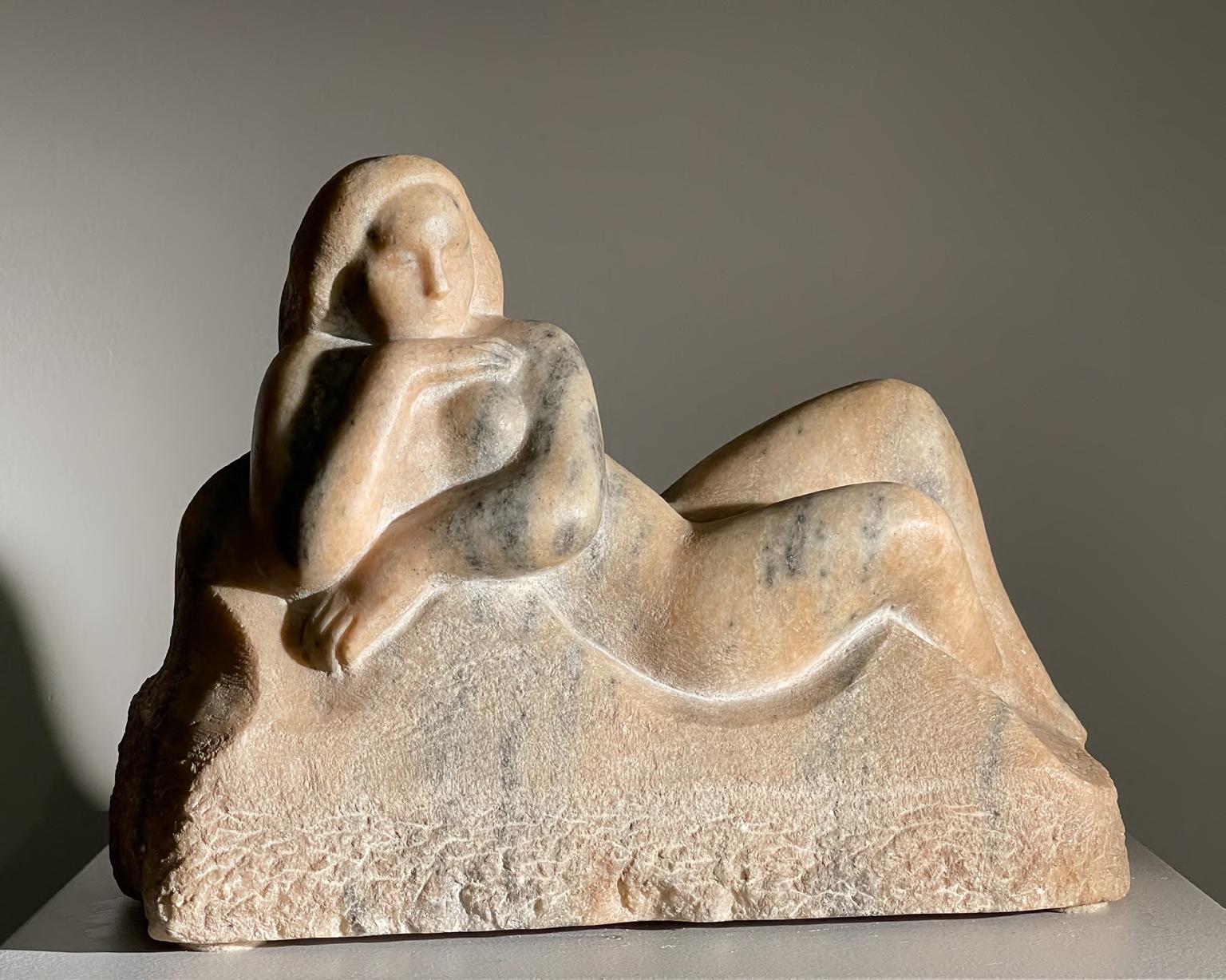
William Zorach (American, 1887 - 1966)
The Dream, 1949
Tennessee marble
9 H. x 12 W. x 5 1/4 D. inches
Signed front right base: Zorach
Signed rear base: Zorach
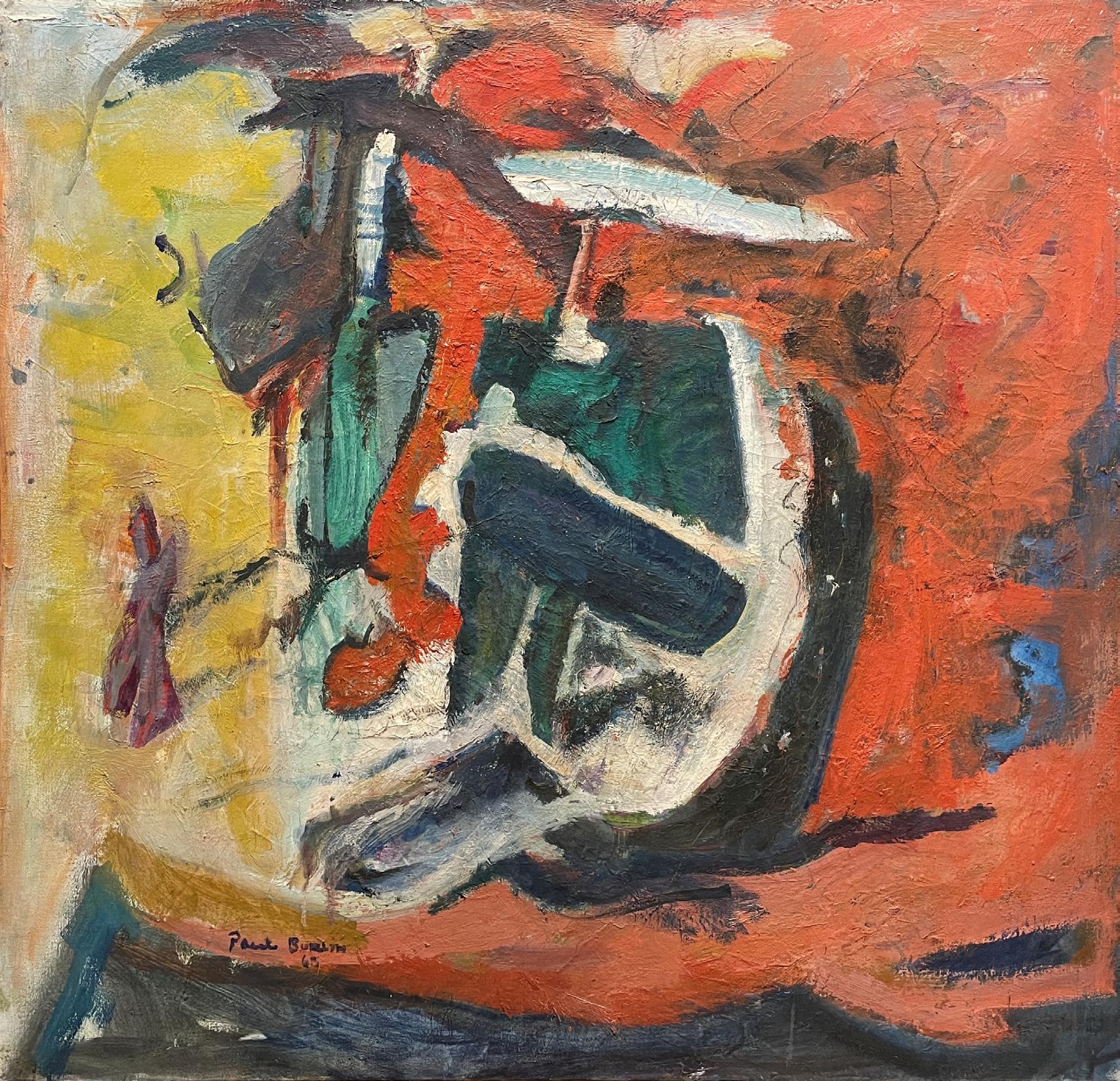
Paul Burlin (American, 1886 - 1969)
Figure in Disguise, 1963
Oil on canvas
38 x 40 inches
Signed and dated lower left
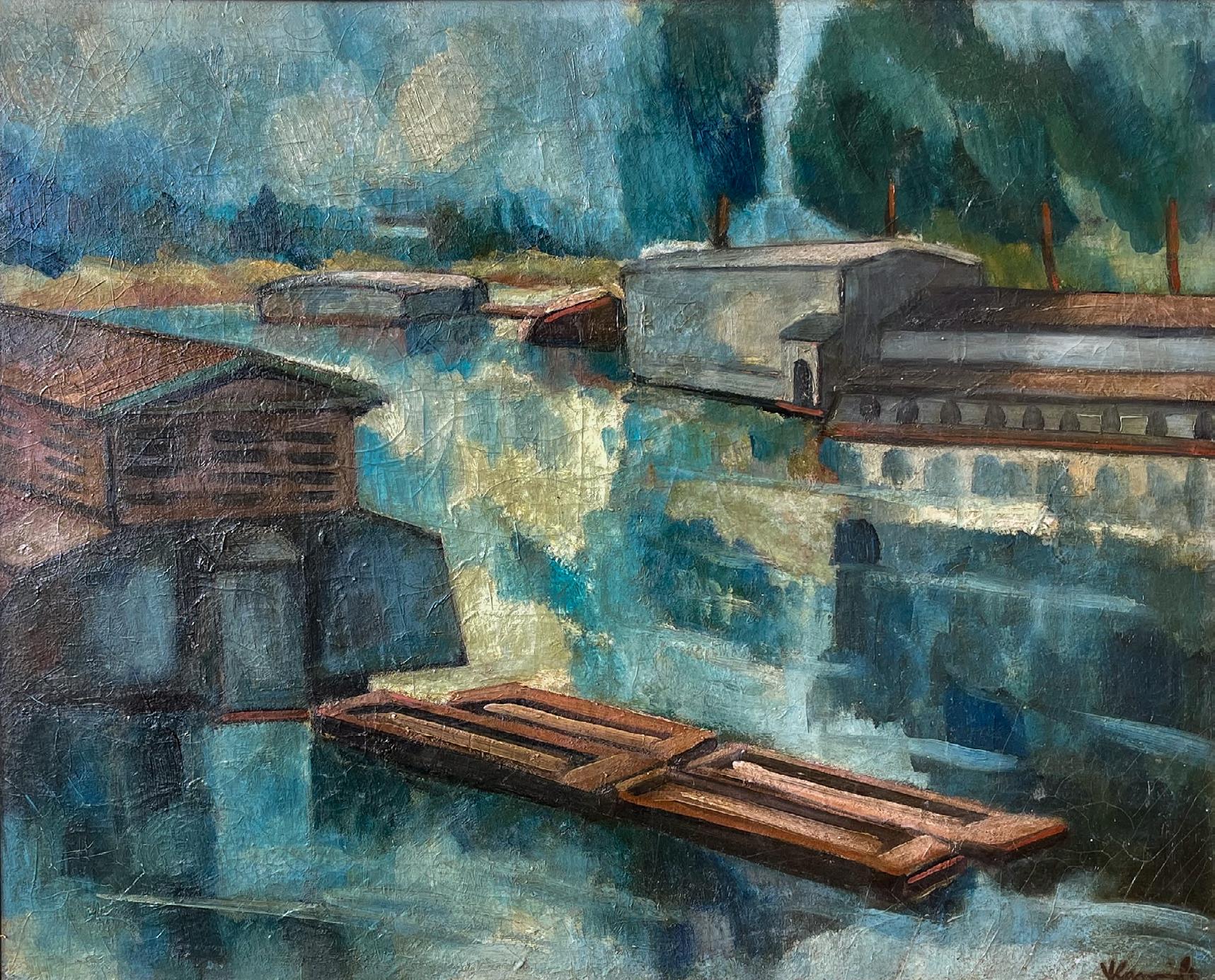
Maurice de Vlaminck (French, 1876-1958)
Barges on the Seine, circa 1908
Oil on canvas
25 1/4 x 34 1/2 inches
Signed lower right: Vlaminck
Also included in the exhibition:
Solon H. Borglum (American, 1868-1922)
The Bucking Bronco, circa 1902
Bronze, dark brown patina
13 1/2 H. to top of whip, 13 1/4 W. x 8 3/8 D. inches
Signed on base: Solon Borglum / copyright
Inscribed on base: ROMAN BRONZE
WORKS N.Y. 1902
William Glackens (American, 1870-1939)
Street Fair, circa 1905
Pencil, ink and gouache on paper artists board
10 x 14 inches
Guy Pène du Bois (American, 1884-1958)
Woman in Parlor, 1905
Oil on artists board
7 1/2 x 10 inches
Signed lower left: Guy Pène du Bois
Gutzon Borglum (American, 1867-1941)
Sketch, The Mares of Diomedes, 1905
Bronze, brown patina
4 H. x 5 W. x 3 D. inches
Signed: Gutzon Borglum
Arthur B. Davies (American, 1862-1928)
Figure Composition, circa 1910
Oil on canvas
6 x 12 inches
George Bellows (American, 1882-1925)
Business-Men's Class, Y.M.C.A, 1916
Lithograph on wove paper
11 1/2 x 17 1/8 inches
Signed, numbered "No. 41" and titled lower margin
Edition of 64
Ethel Myers (American, 1881-1960)
Florence Reed, 1920, cast later
Bronze, 12 inches high
Edition 3/8
Bessie Potter Vonnoh (American, 1872-1955)
The Sunbeam, 1920-1921
Bronze, brown patina
11 H. inches, mounted to period marble base
Overall height, 14 inches
Signed and numbered, No. X, inscribed: R.B.W.
Alexander Archipenko (American, 1887-1964)
Melancholia, 1925
Bronze, 9 3/4 H. x 7 W. x 4 1/2 D. inches
Signed: Archipenko. Edition 3/12 F.
Cast c. 1965
Robert Henri (American, 1865 - 1929)
Draped Studio Model, 1926
Oil & pencil on paper, 16 x 11 3/4 inches
Initialed in pencil lower left; stamped "Robert Henri / Ten Gramercy Park / New York, N.Y. / Han 1926" on the reverse
Wood Gaylor (American, 1883-1957)
Woman in Mirror, 1930
Watercolor on paper
Sight size: 14 1/4 x 10 1/4 inches
Signed lower right: Wood Gaylor 30
Walt Kuhn (American, 1877-1949)
Reclining Figure, 1935
Pen on paper
Sight: 11 x 15 inches
Signed and dated lower left
George Bellows (American, 1882-1925)
Untitled (Young Woman with Hooded Cape)
Charcoal on paper
13 5/8 x 10 1/2 inches
Initialed bottom right: G.B.
Glenn Coleman (American, 1887-1932)
Untitled (City Scene)
Oil on canvas
17 x 21 inches
Signed lower left: G. O. Coleman
George Luks (American, 1867-1933)
A Gothic Cathedral
Black crayon on paper
Sight: 8 1/4 x 5 1/2 inches
Signed lower right
Guy Pène du Bois (American, 1884-1958)
Portrait of Chester Dale
Oil on canvas
20 x 16 inches


